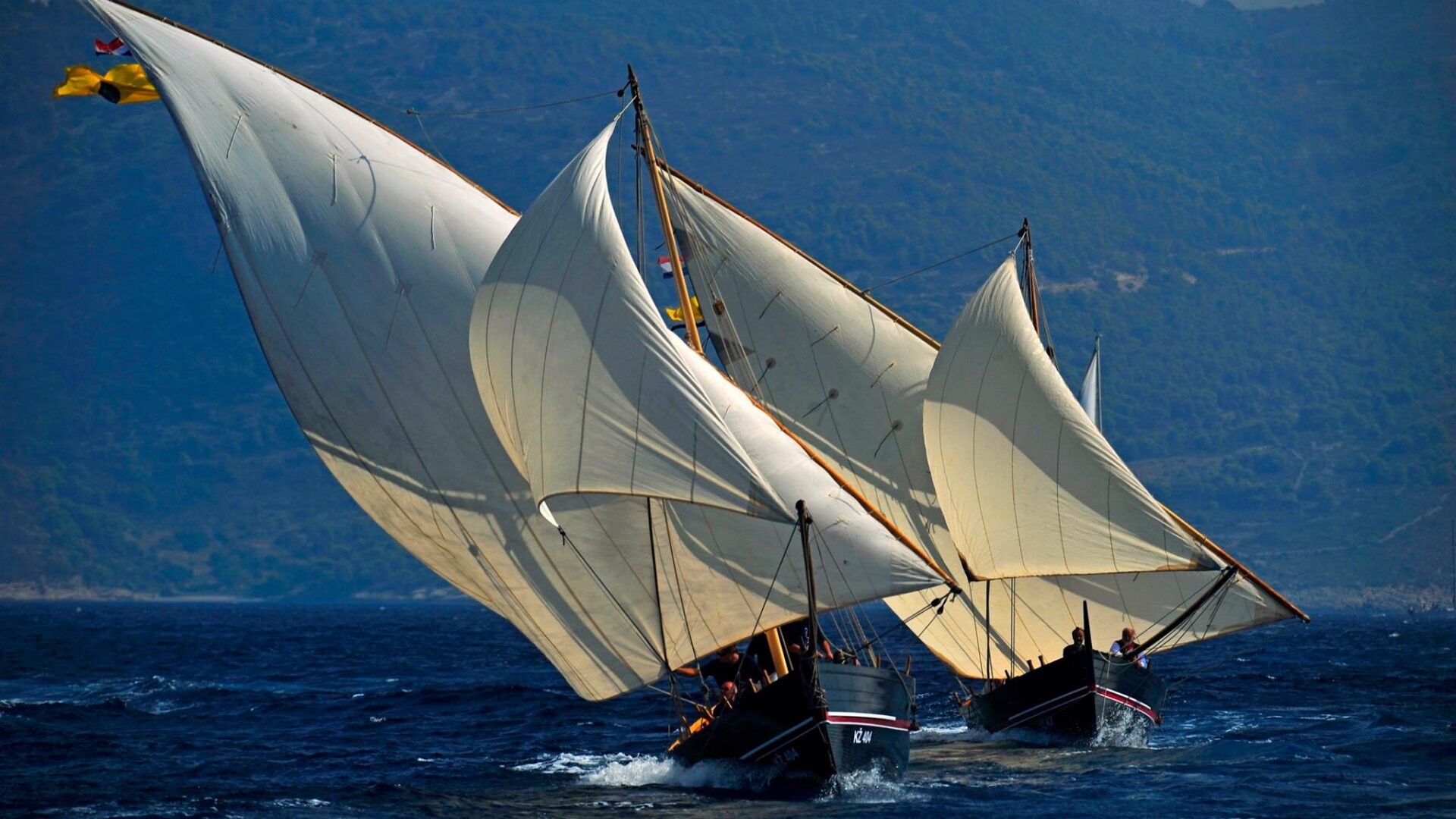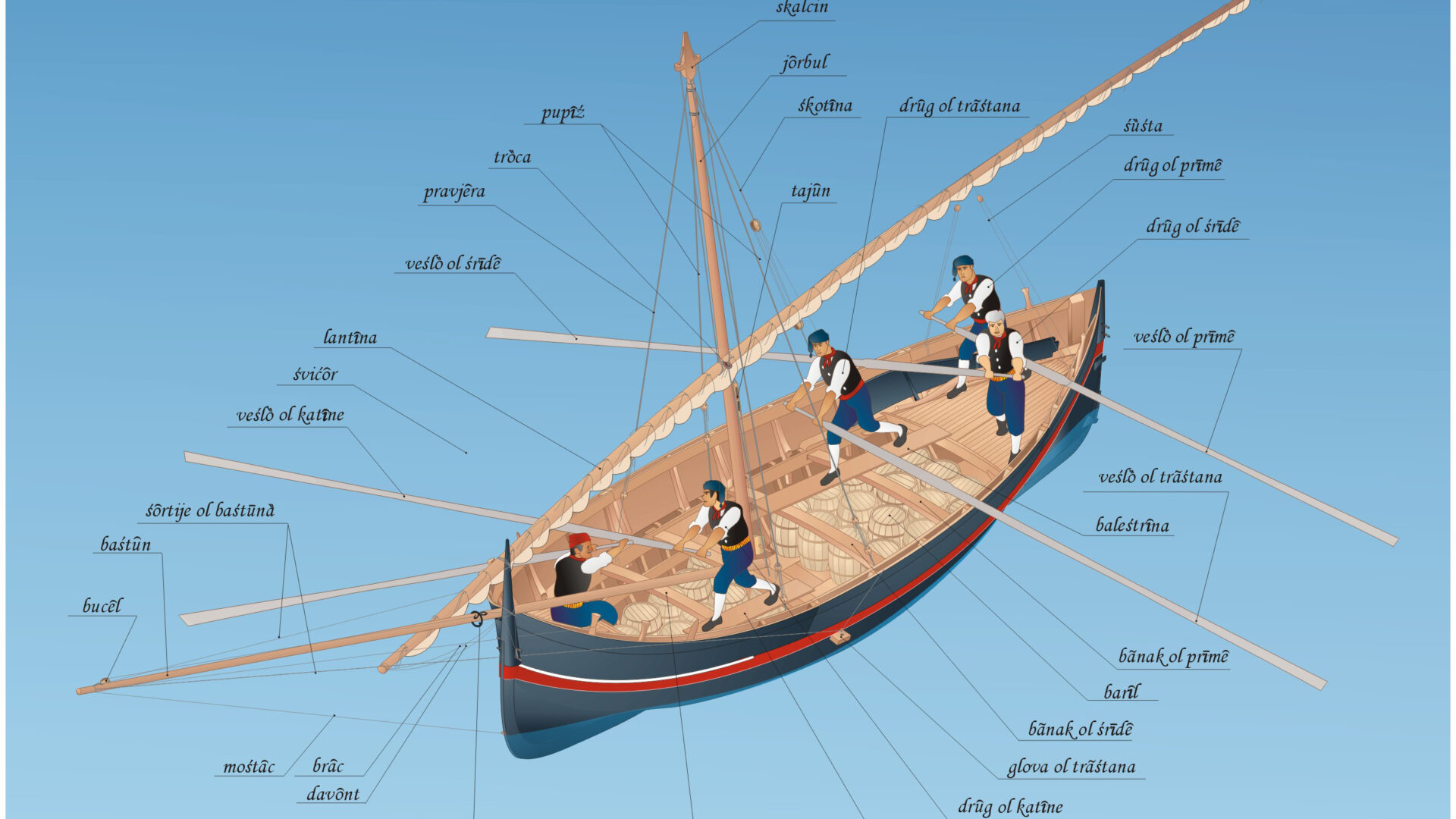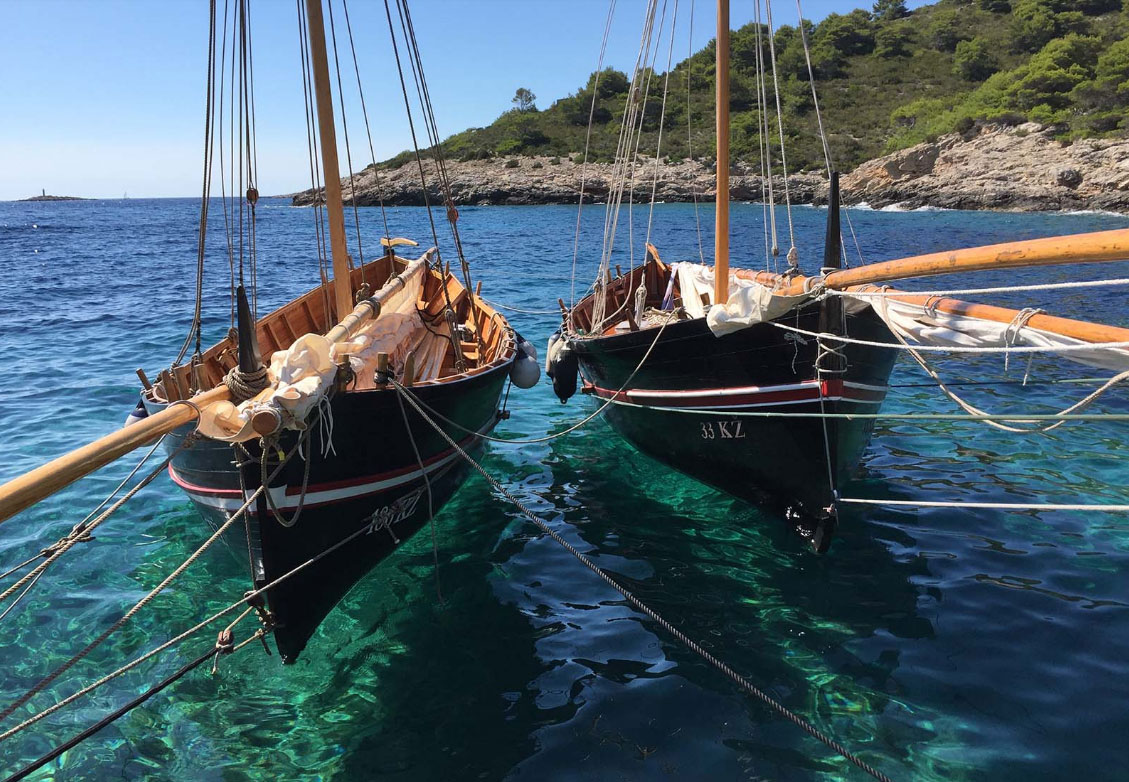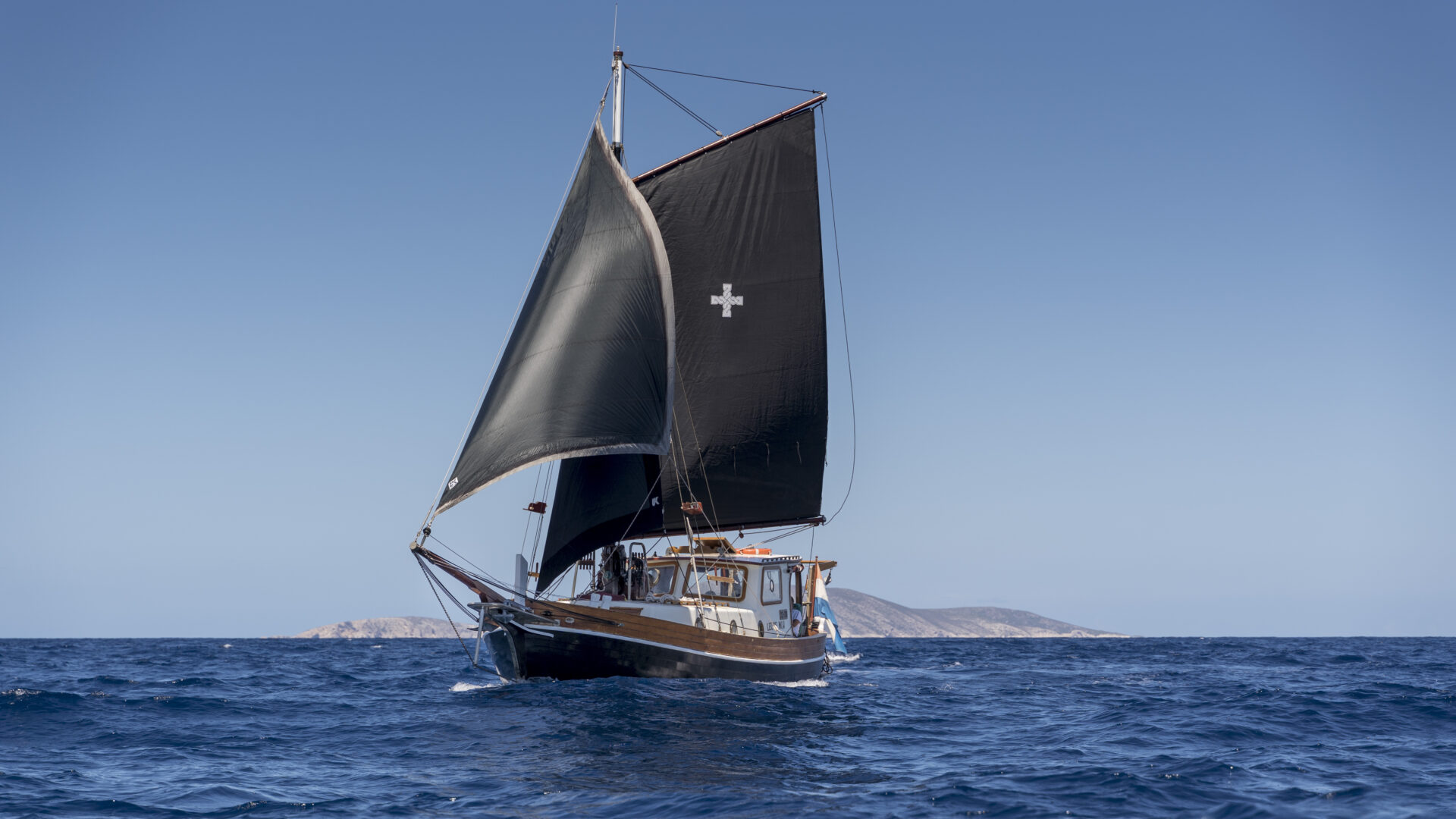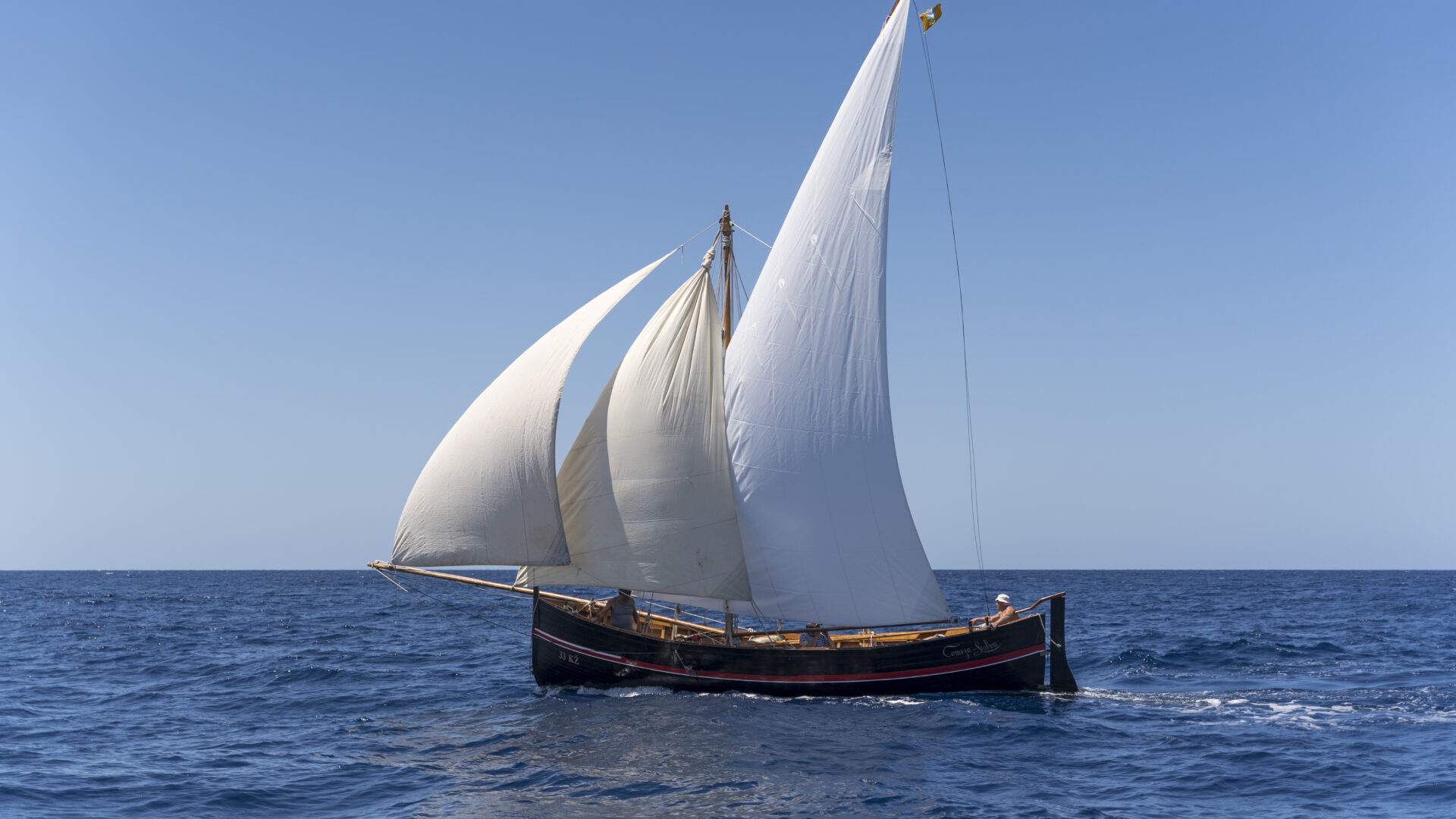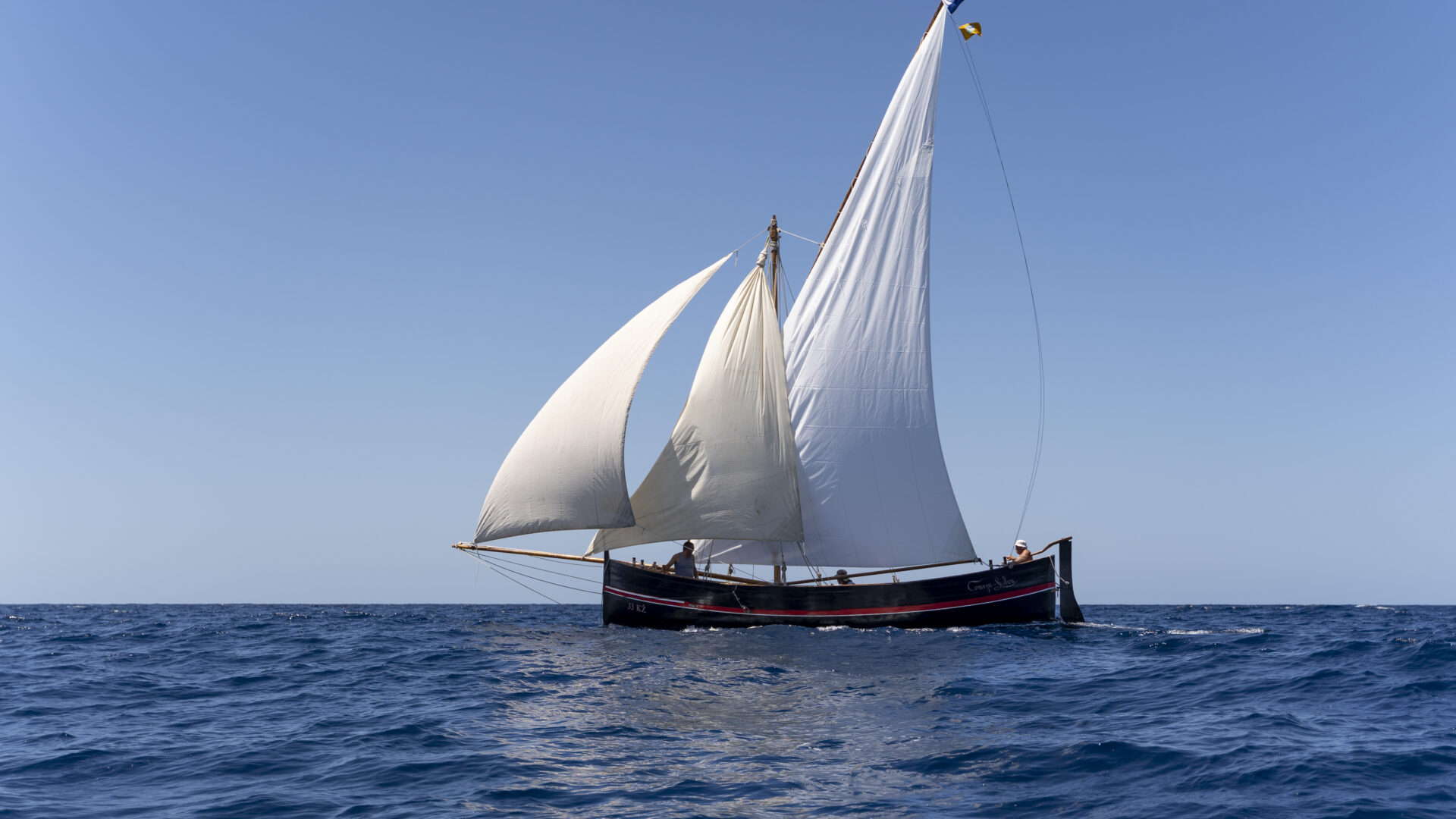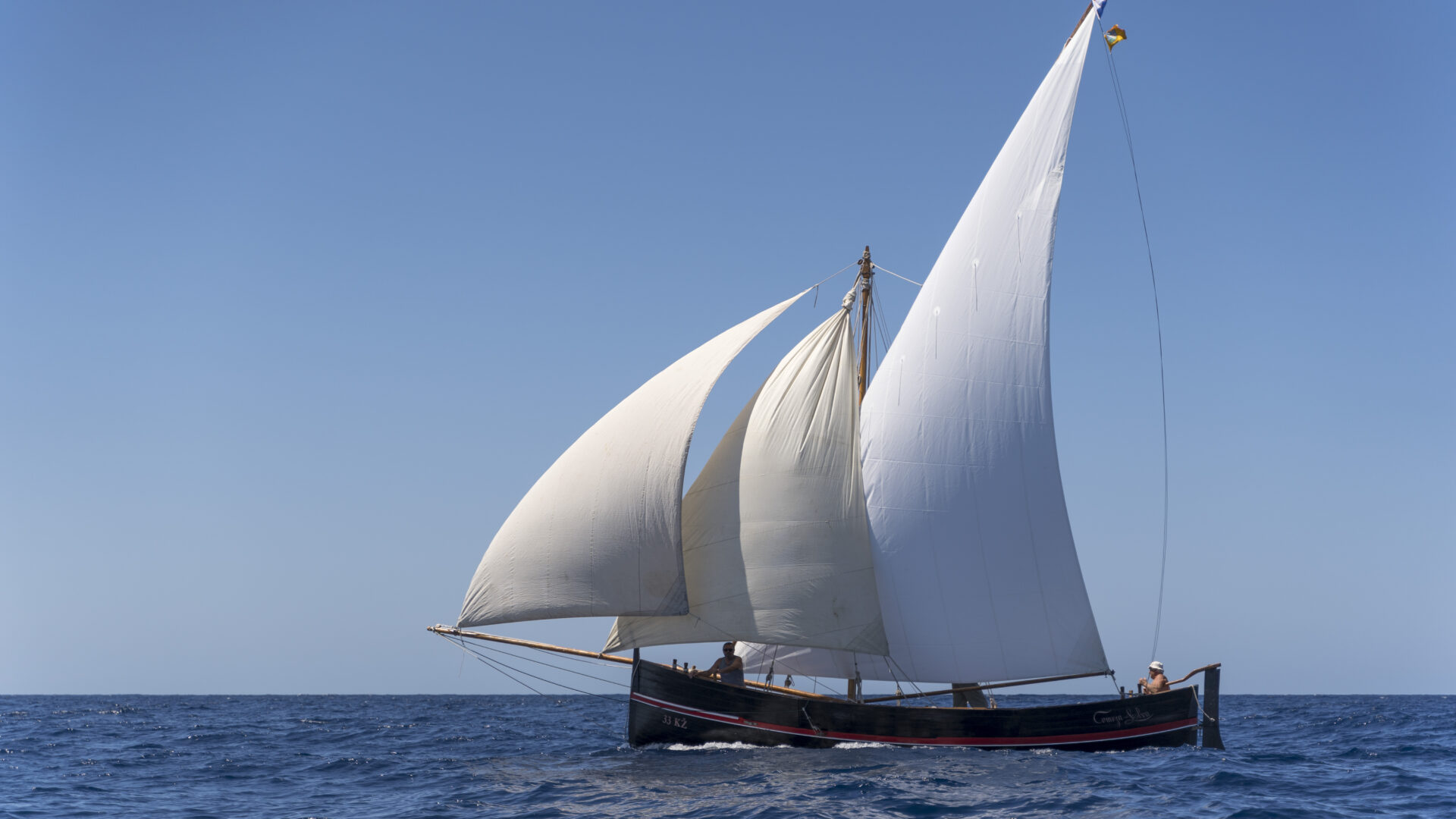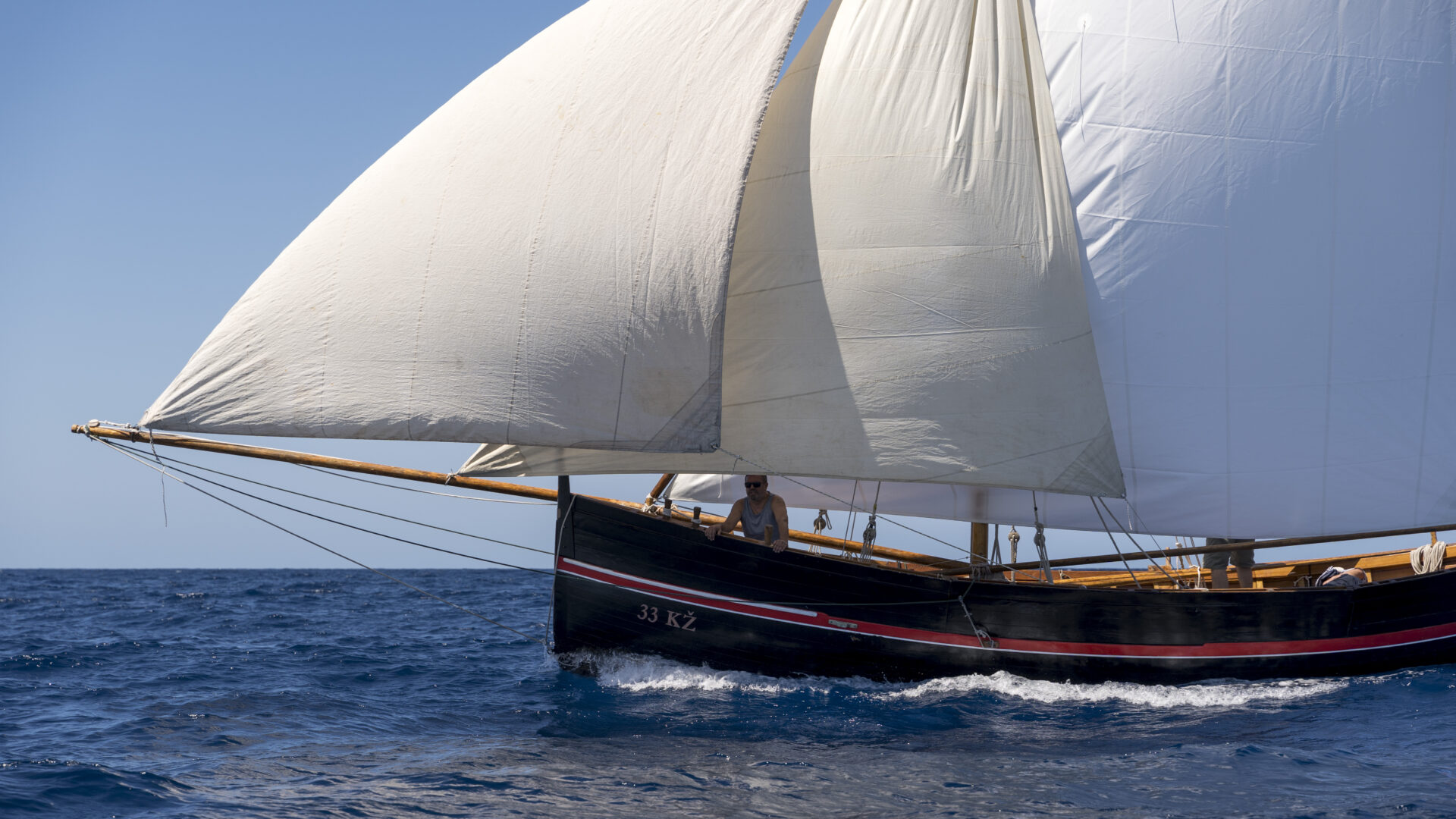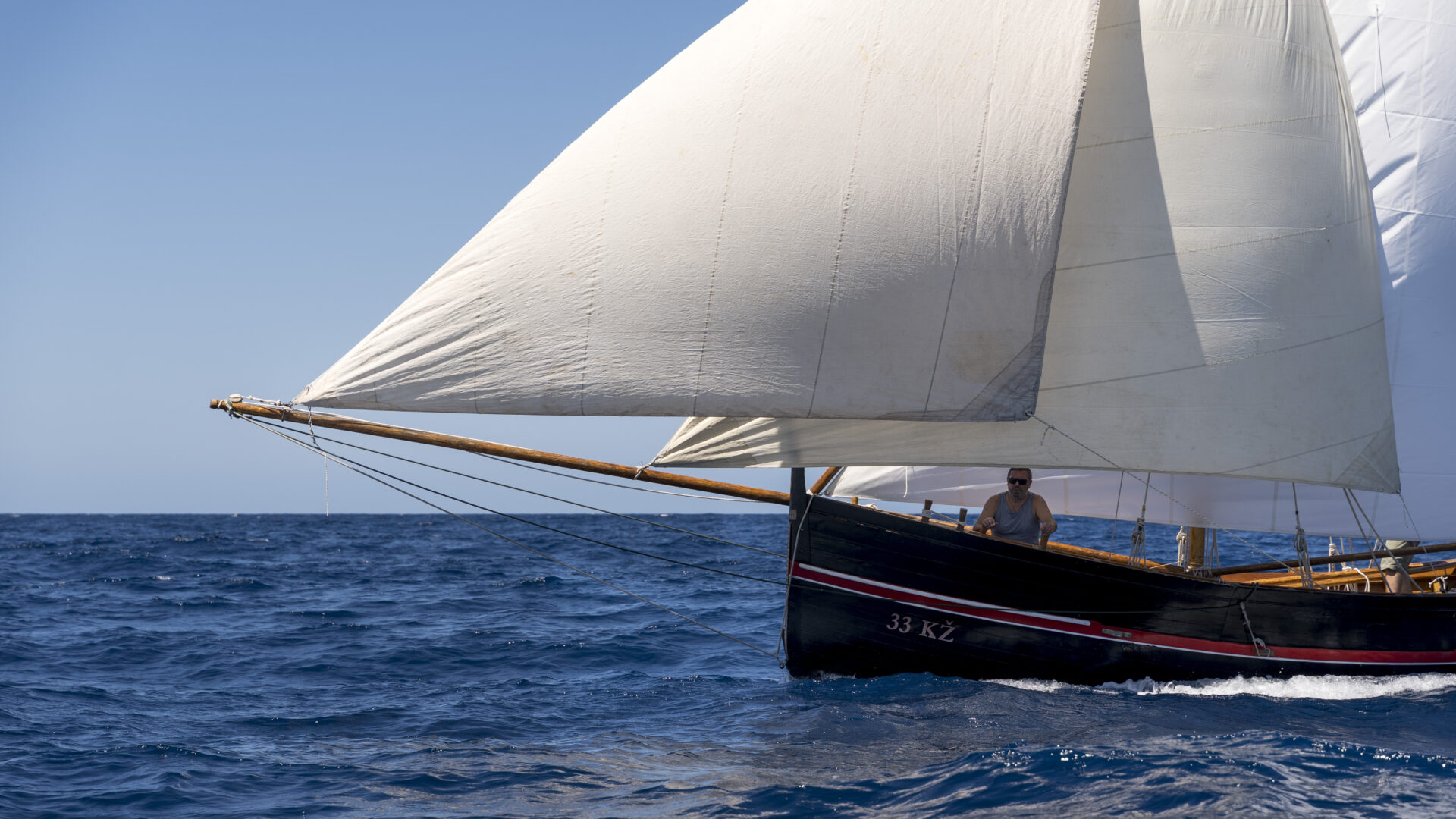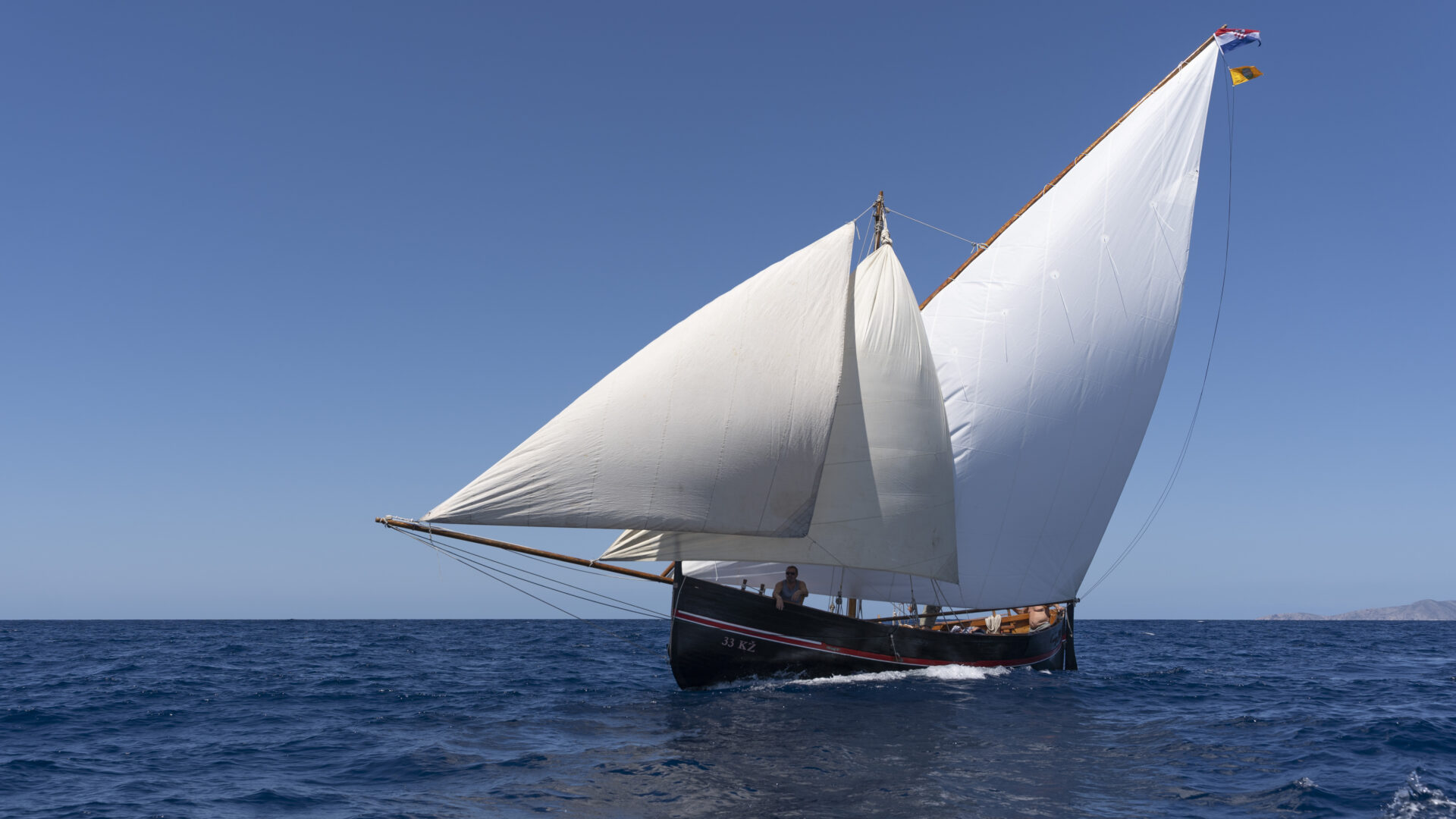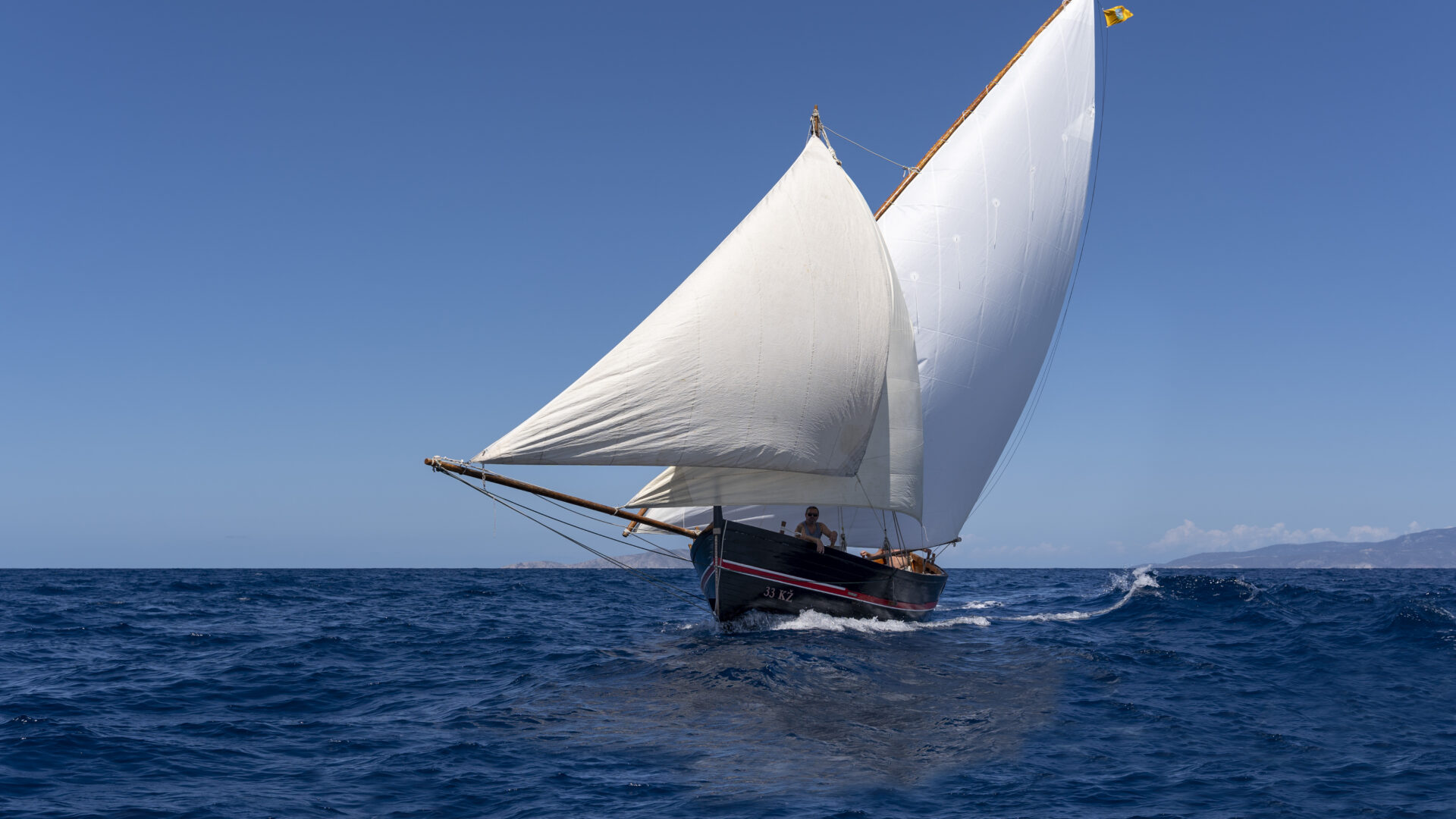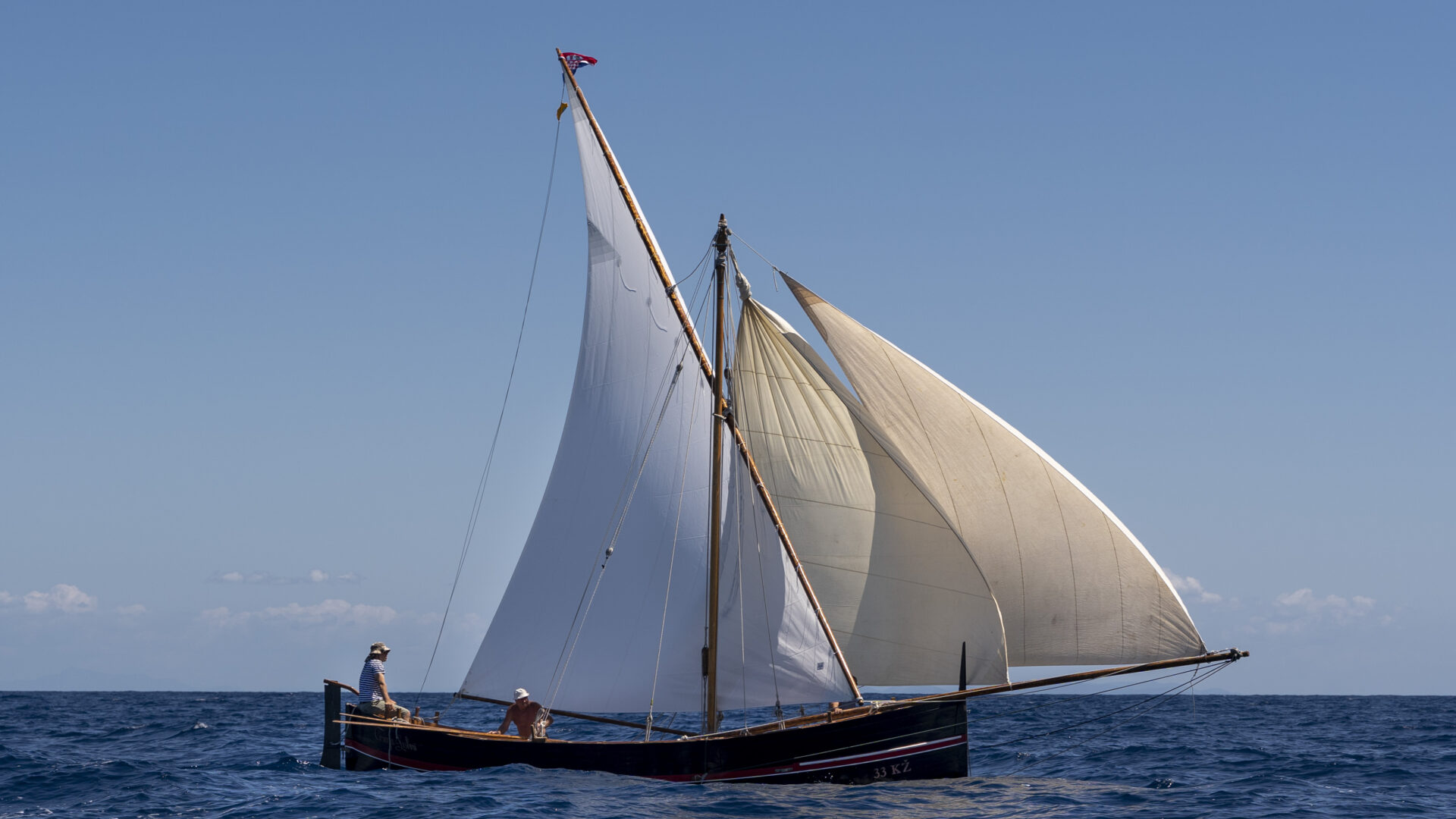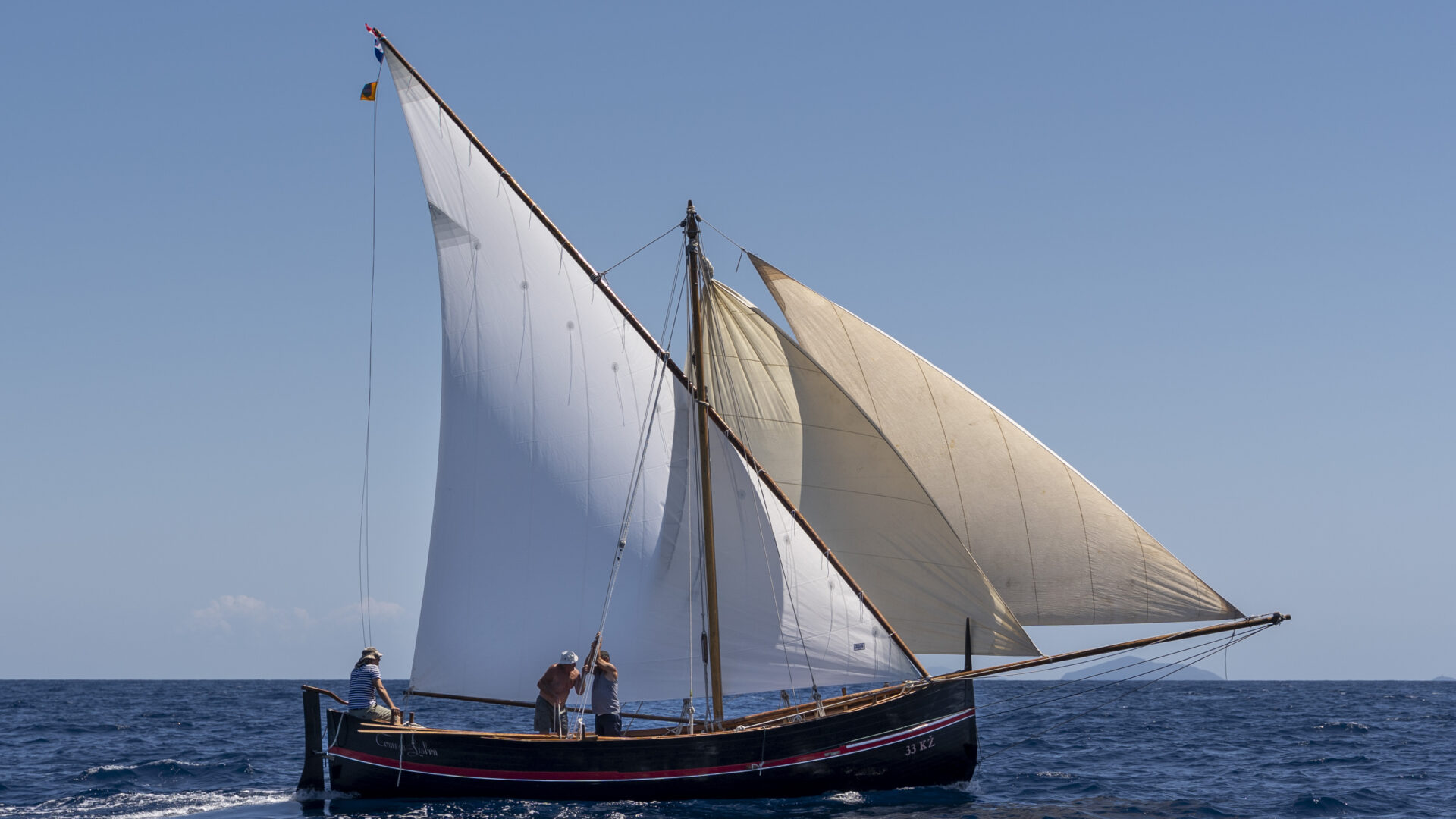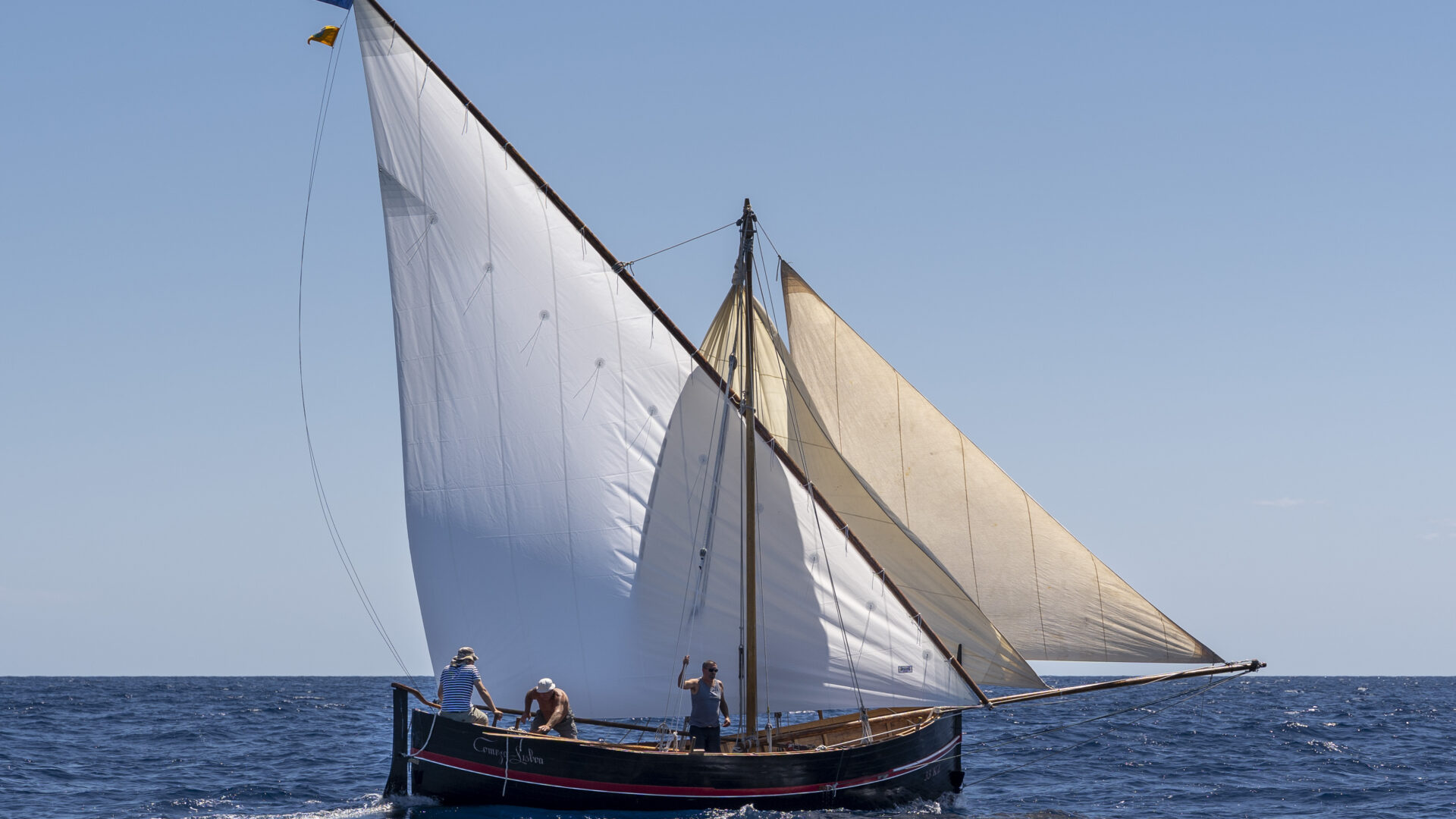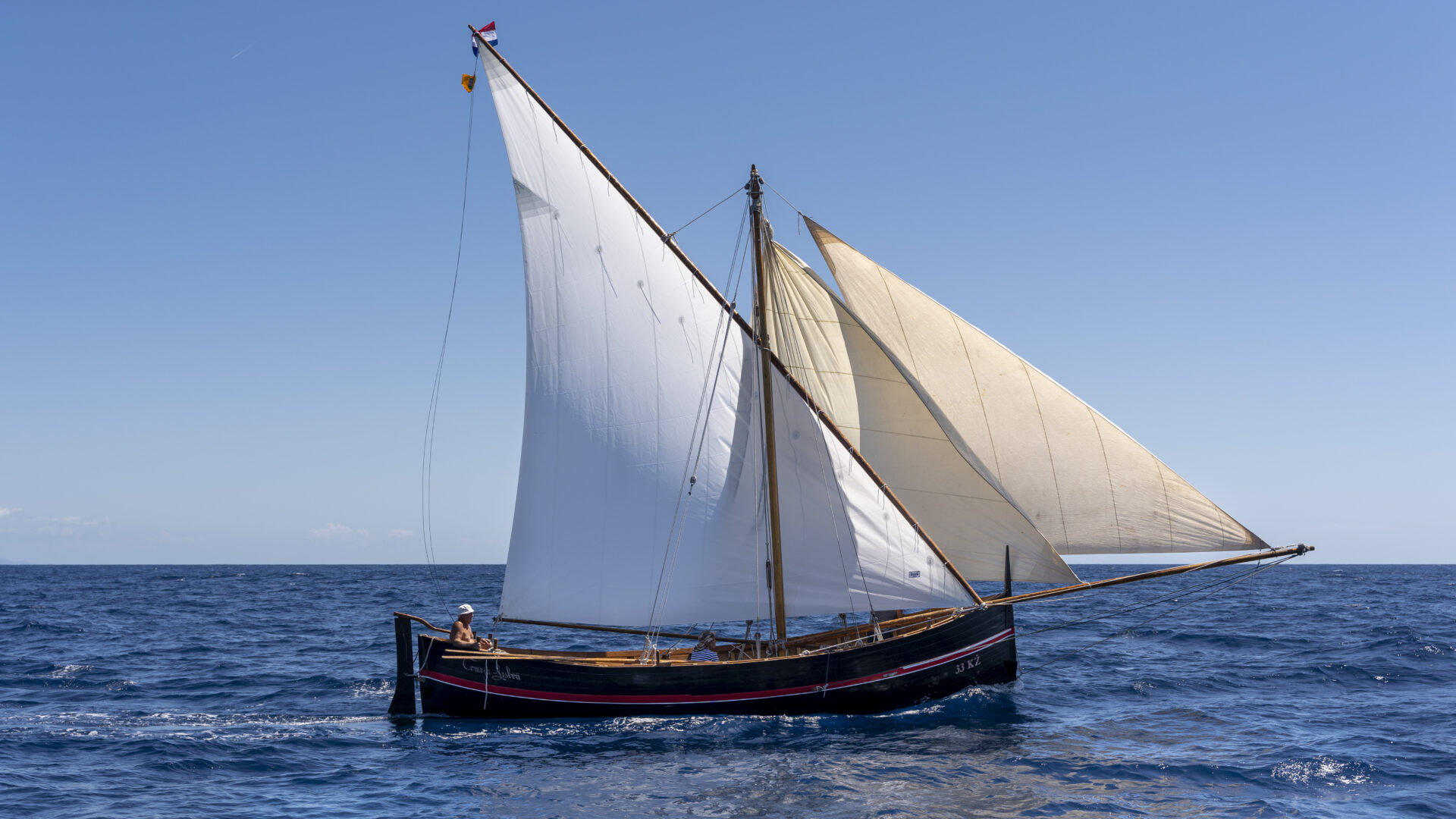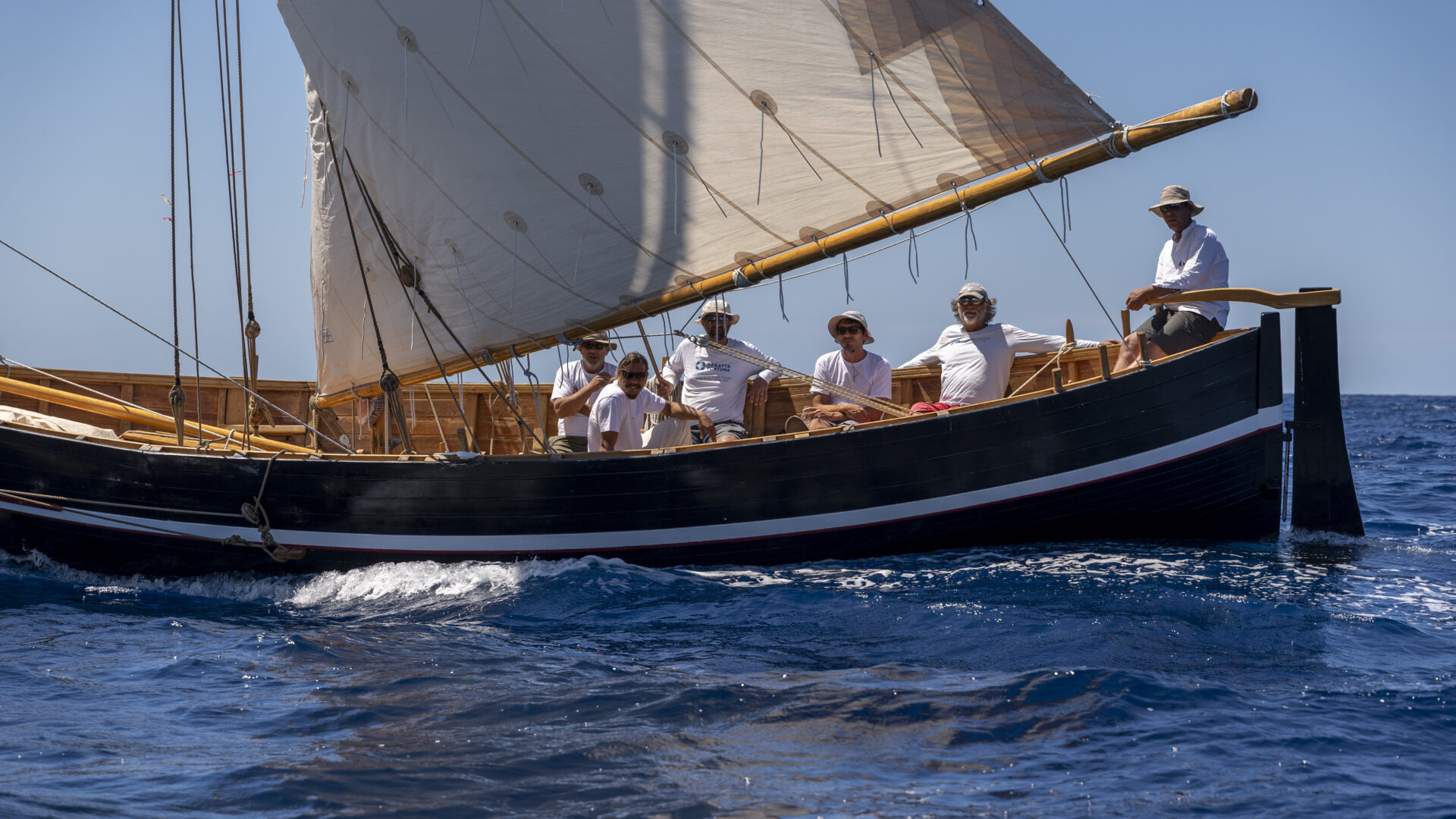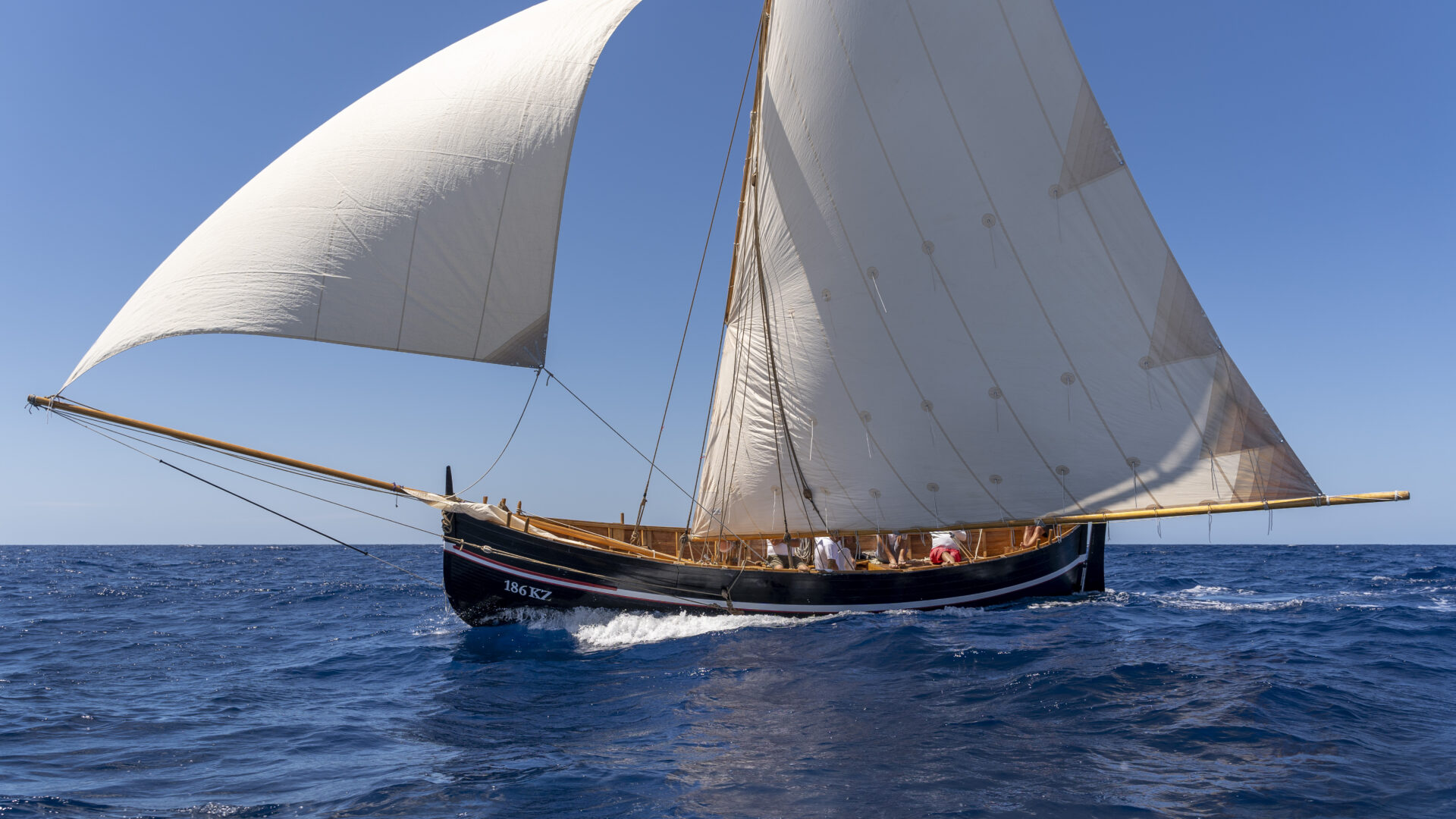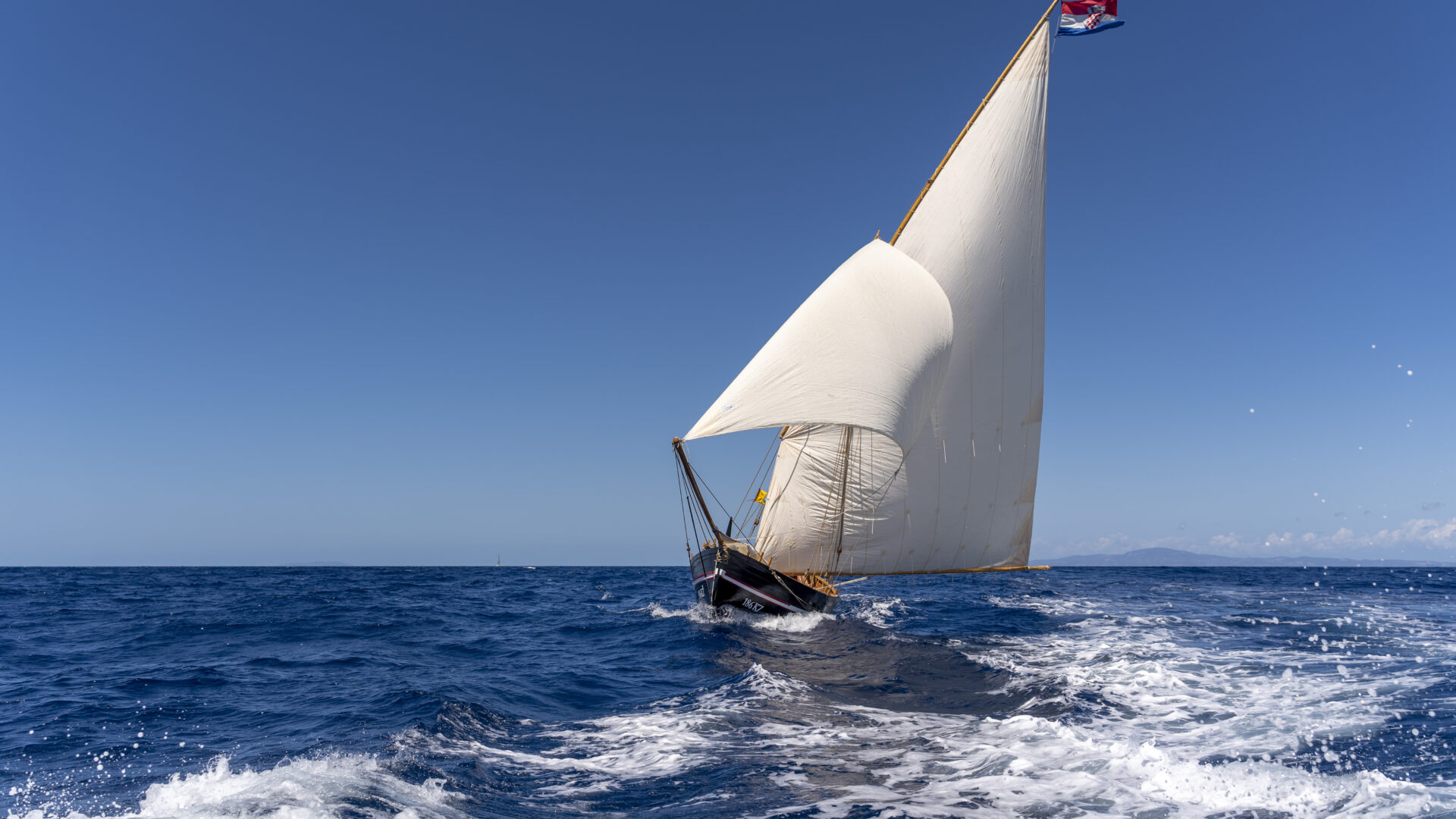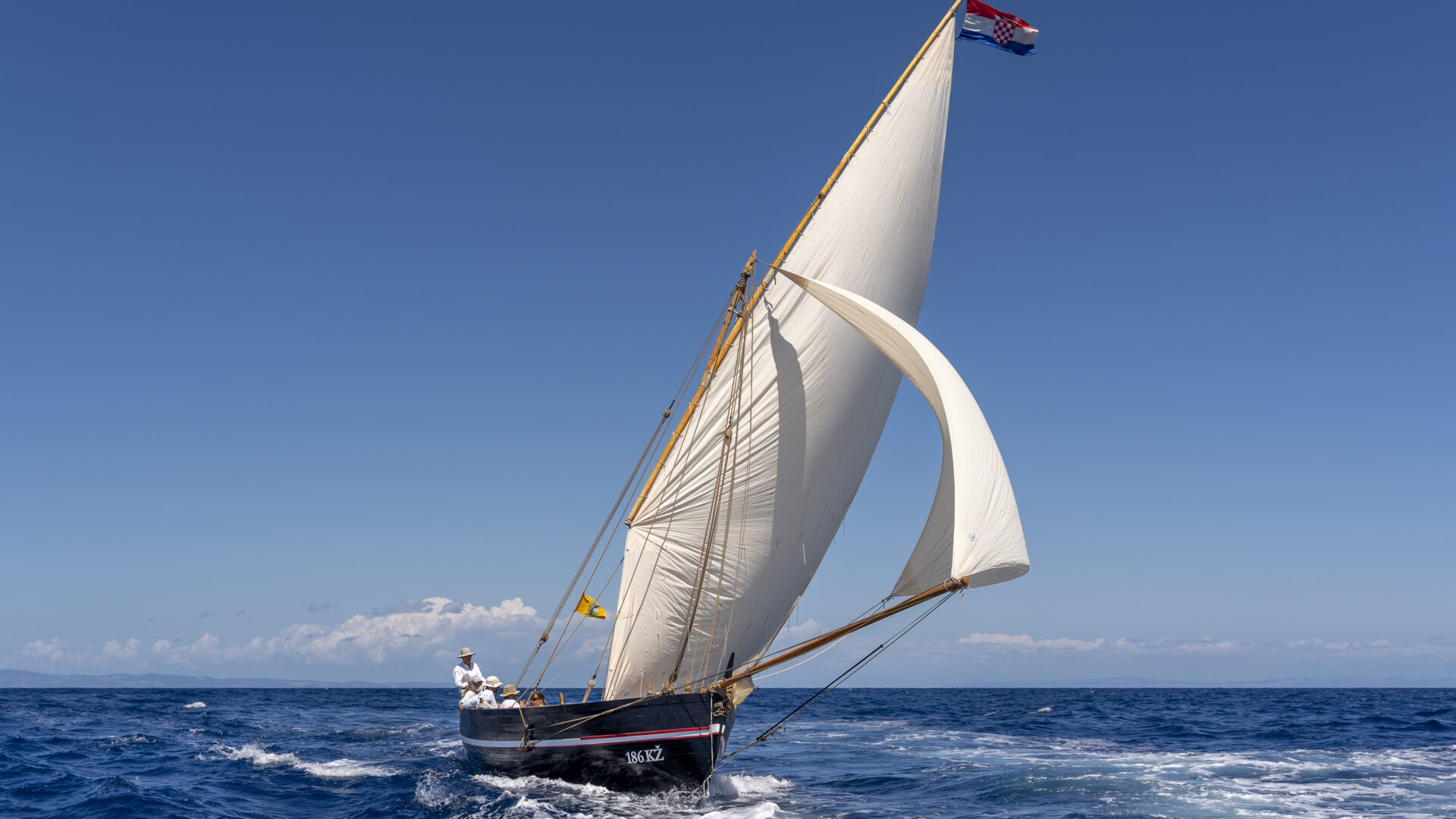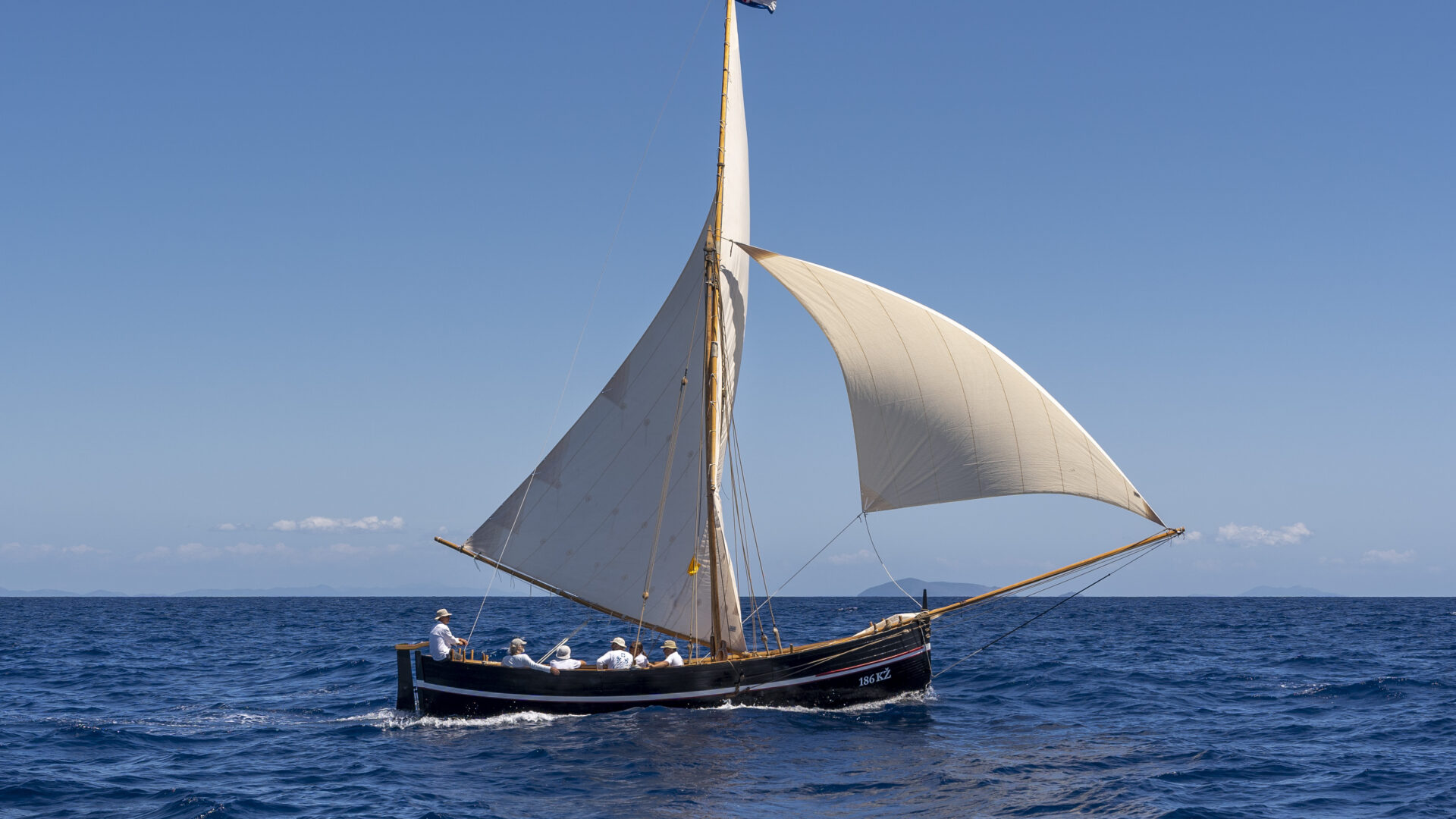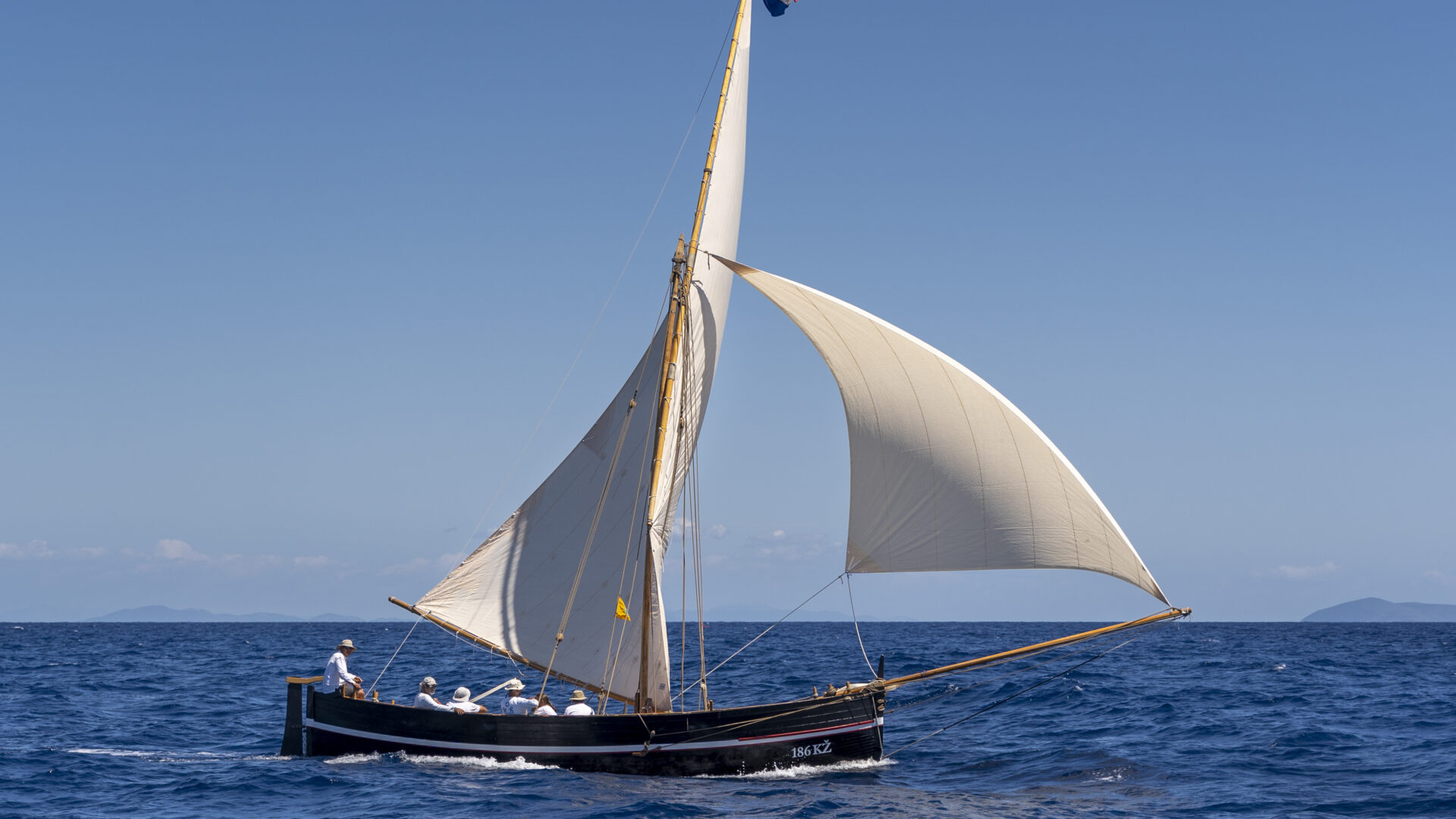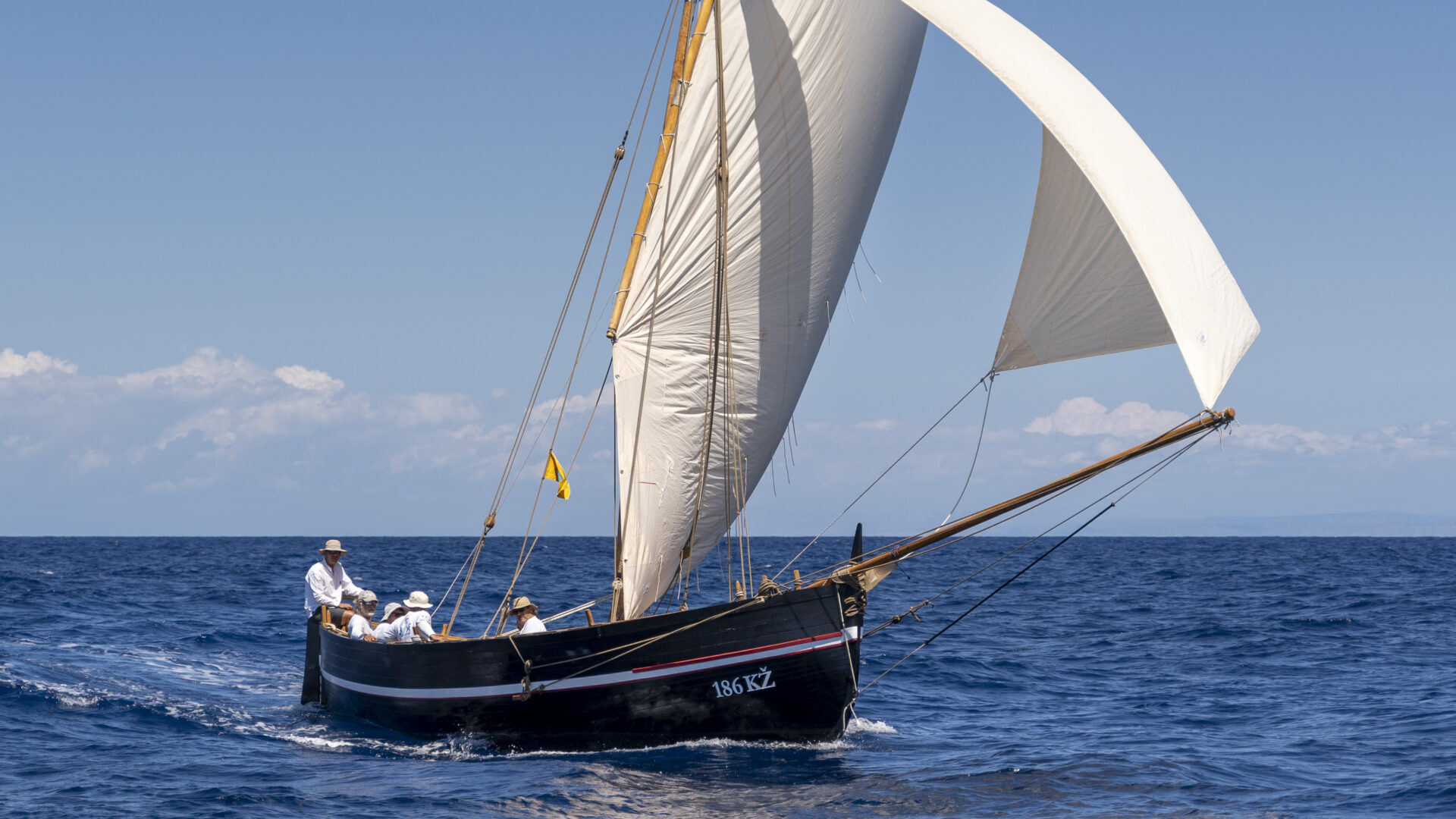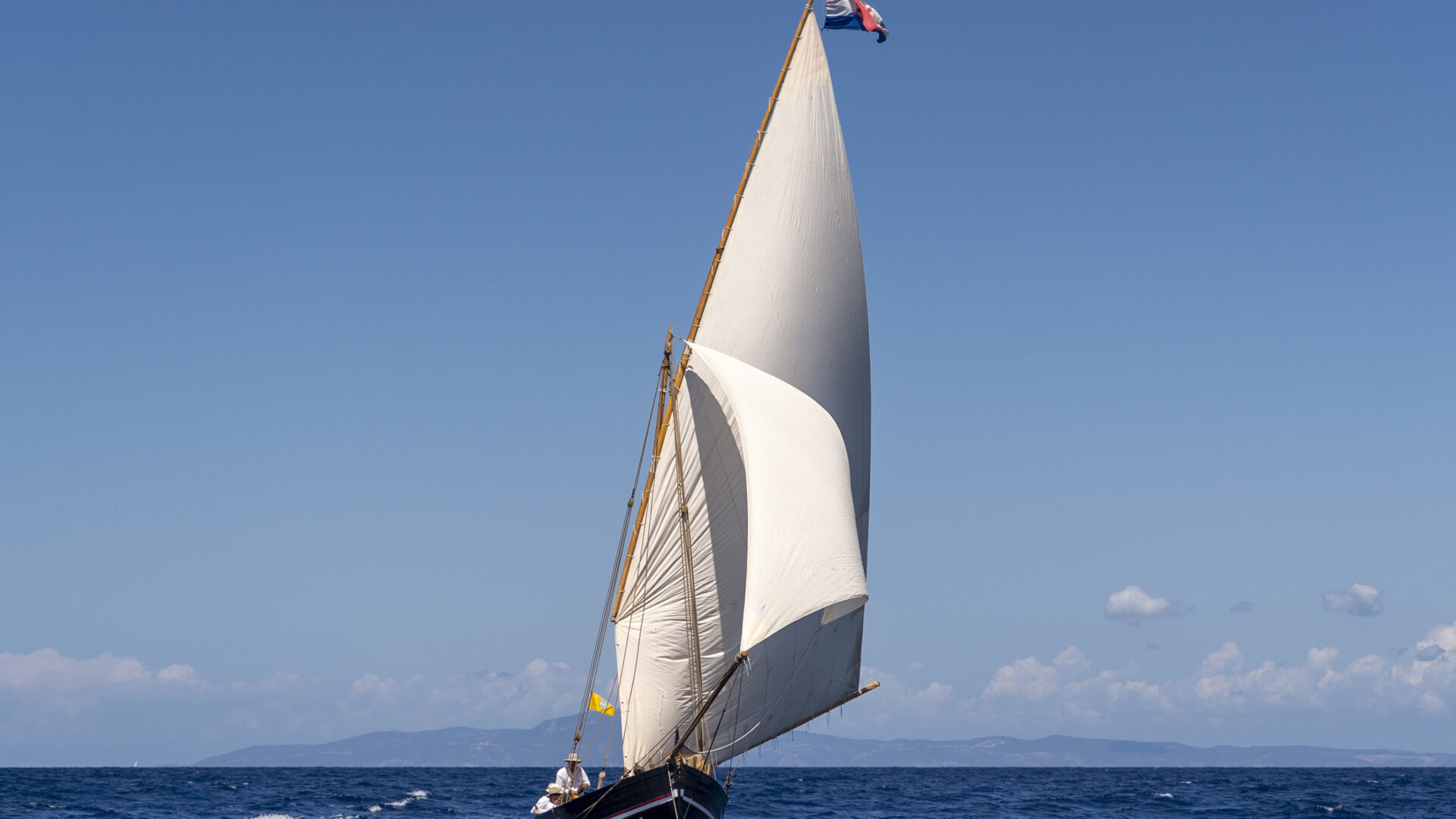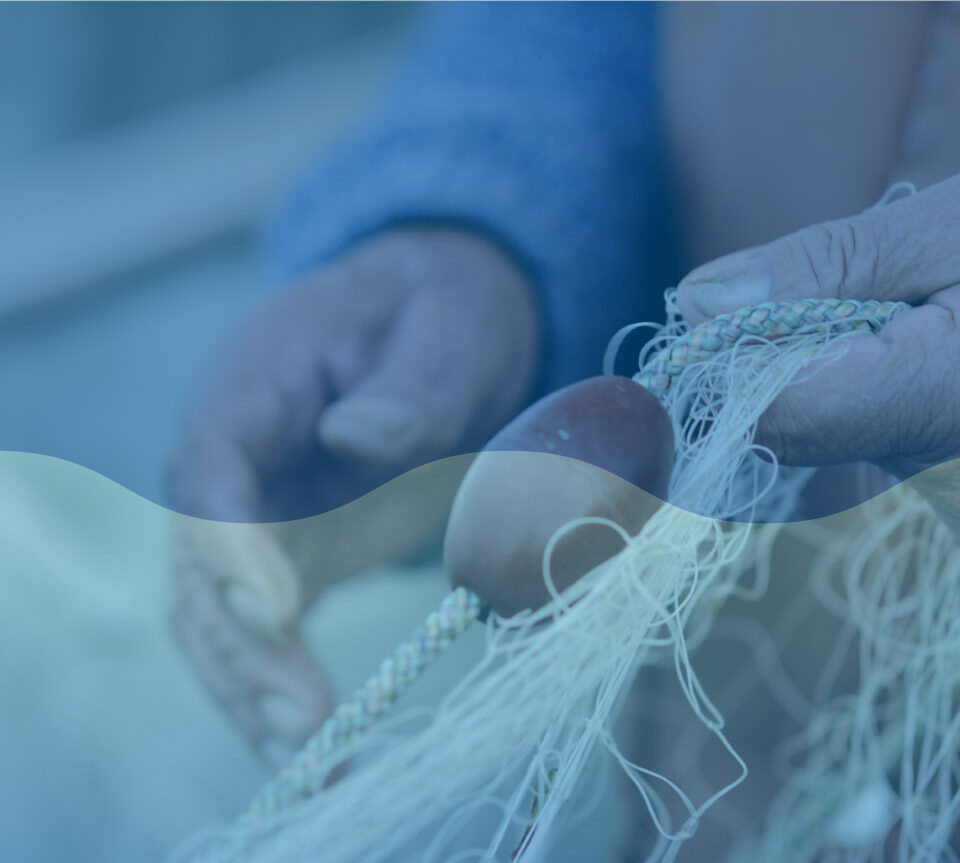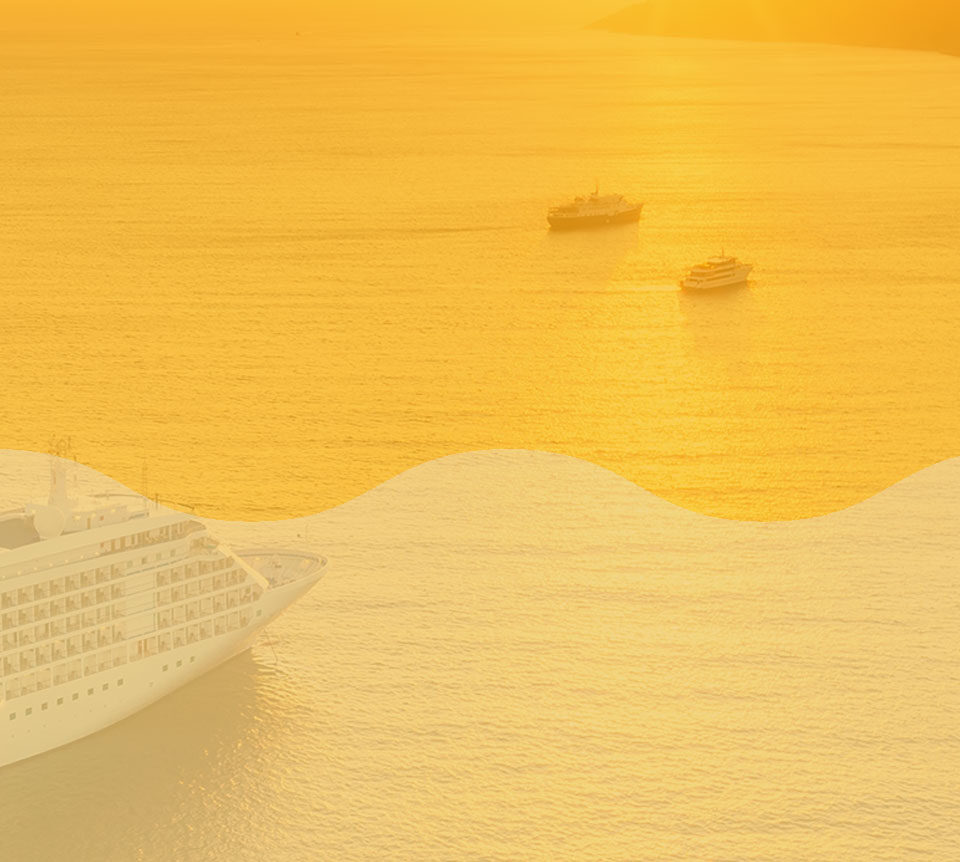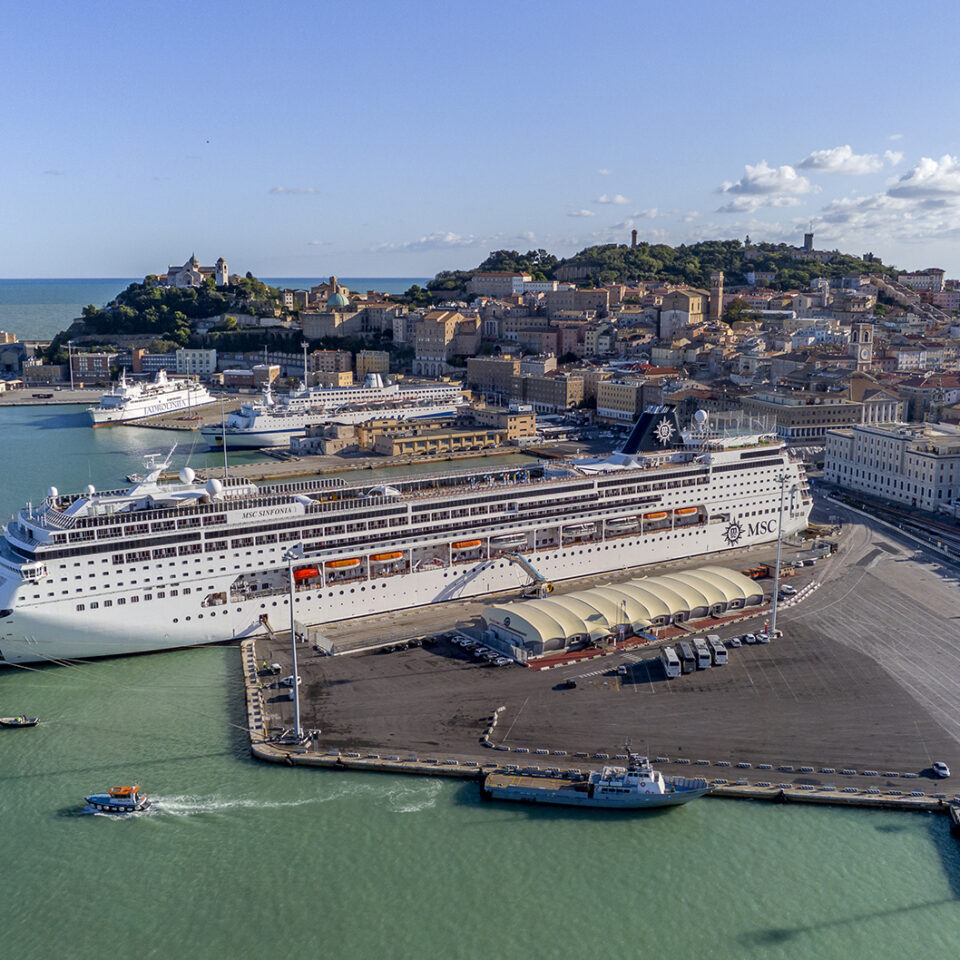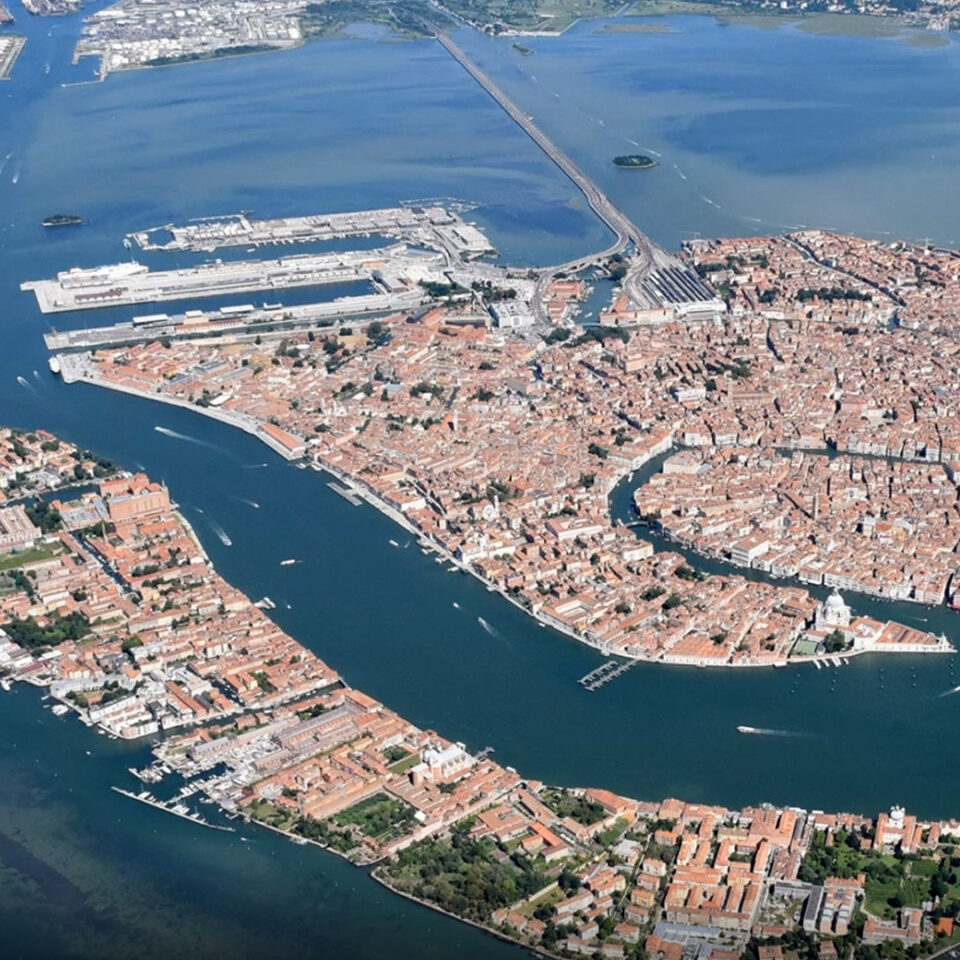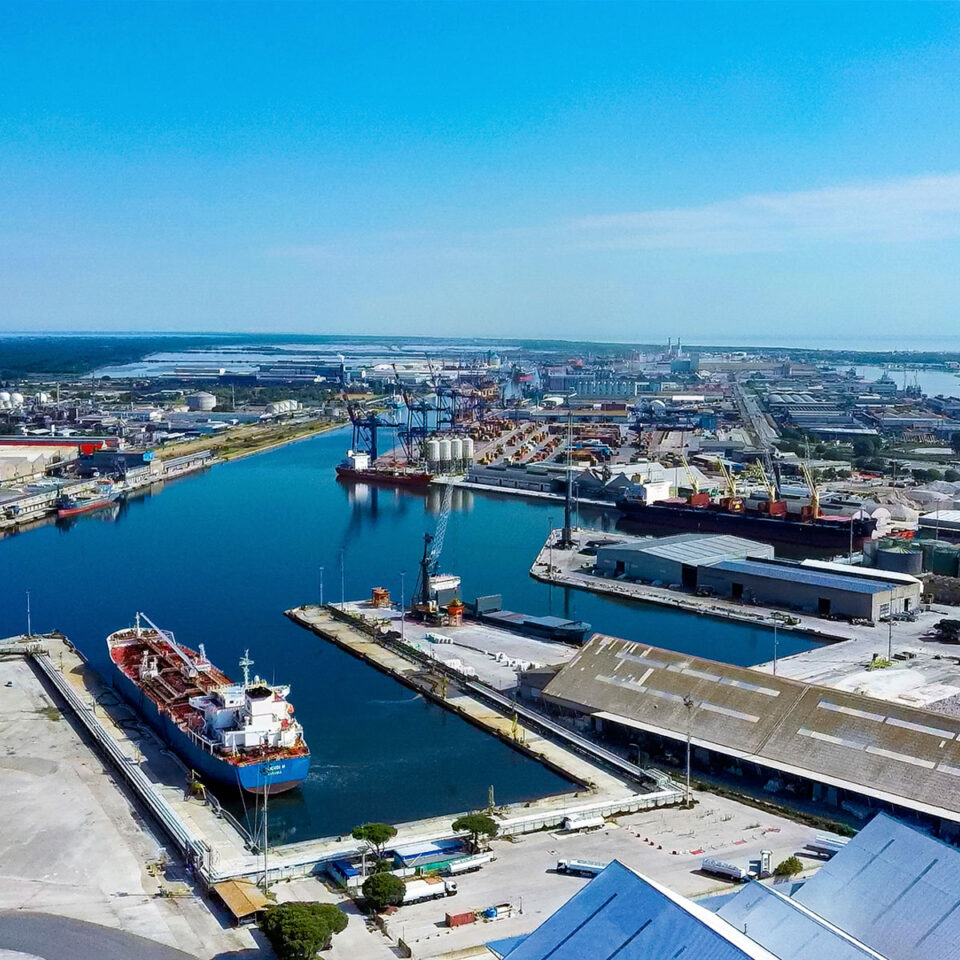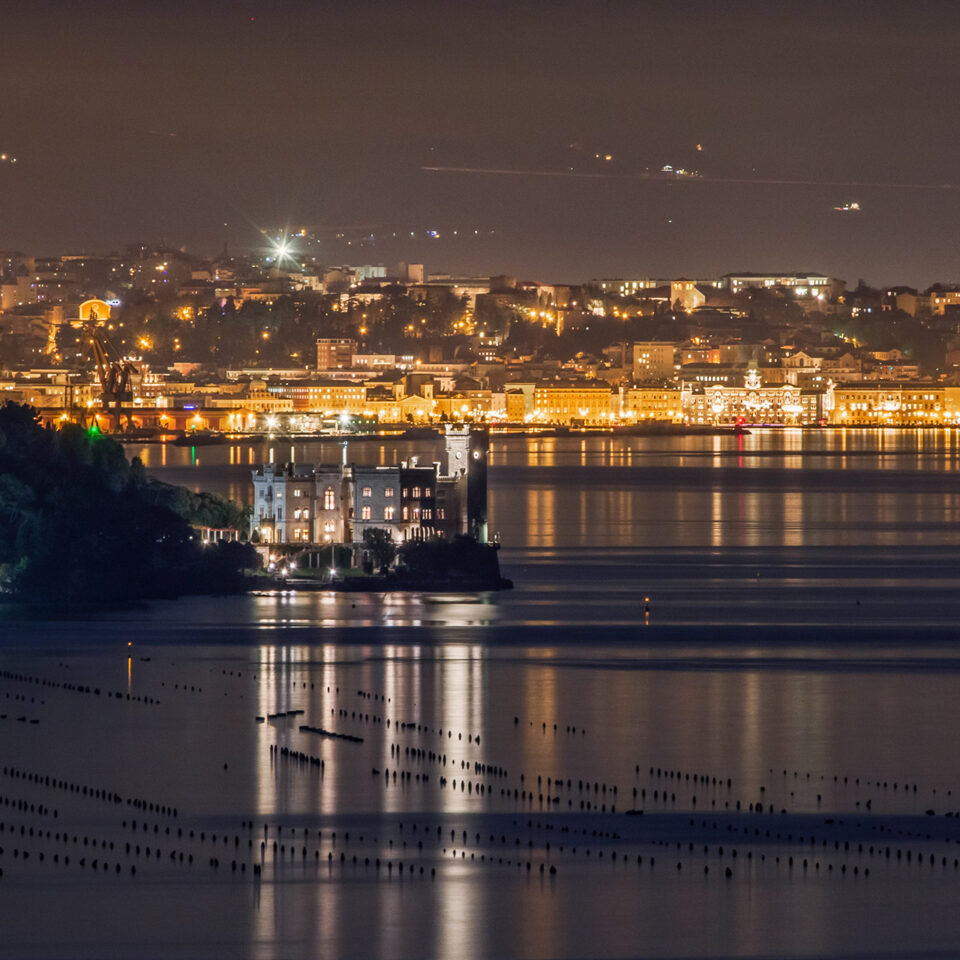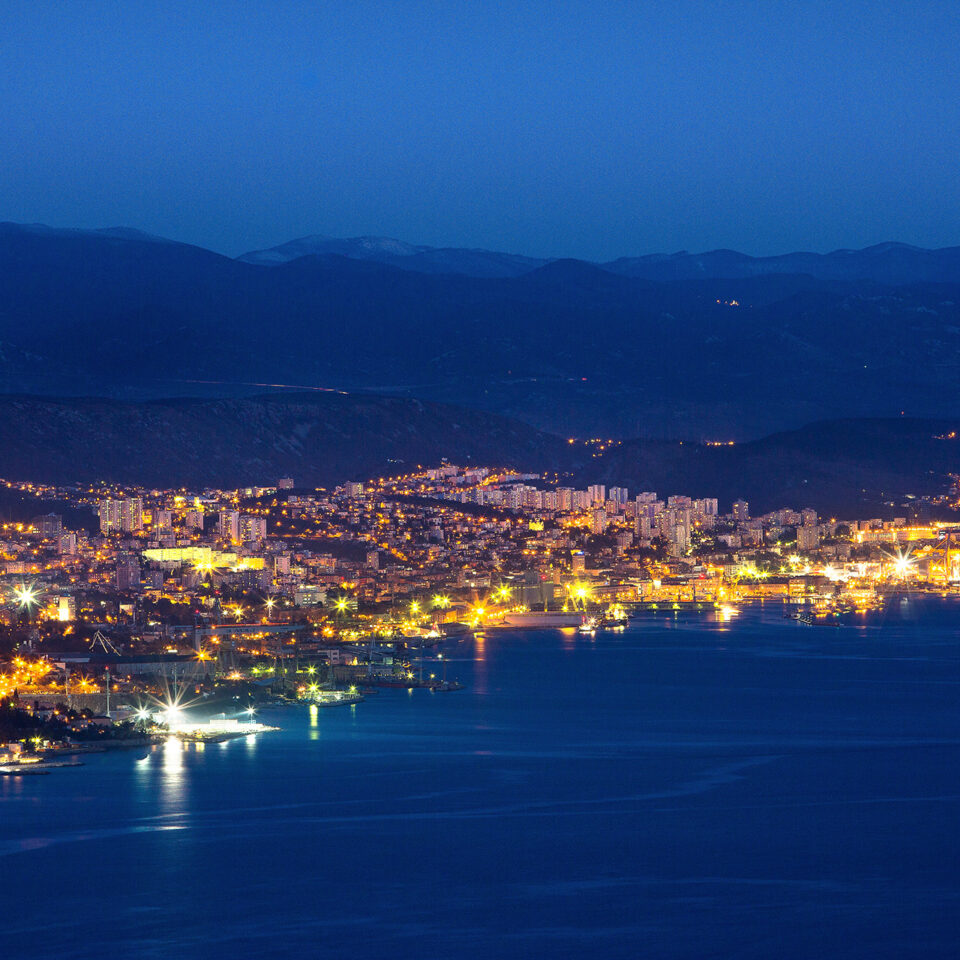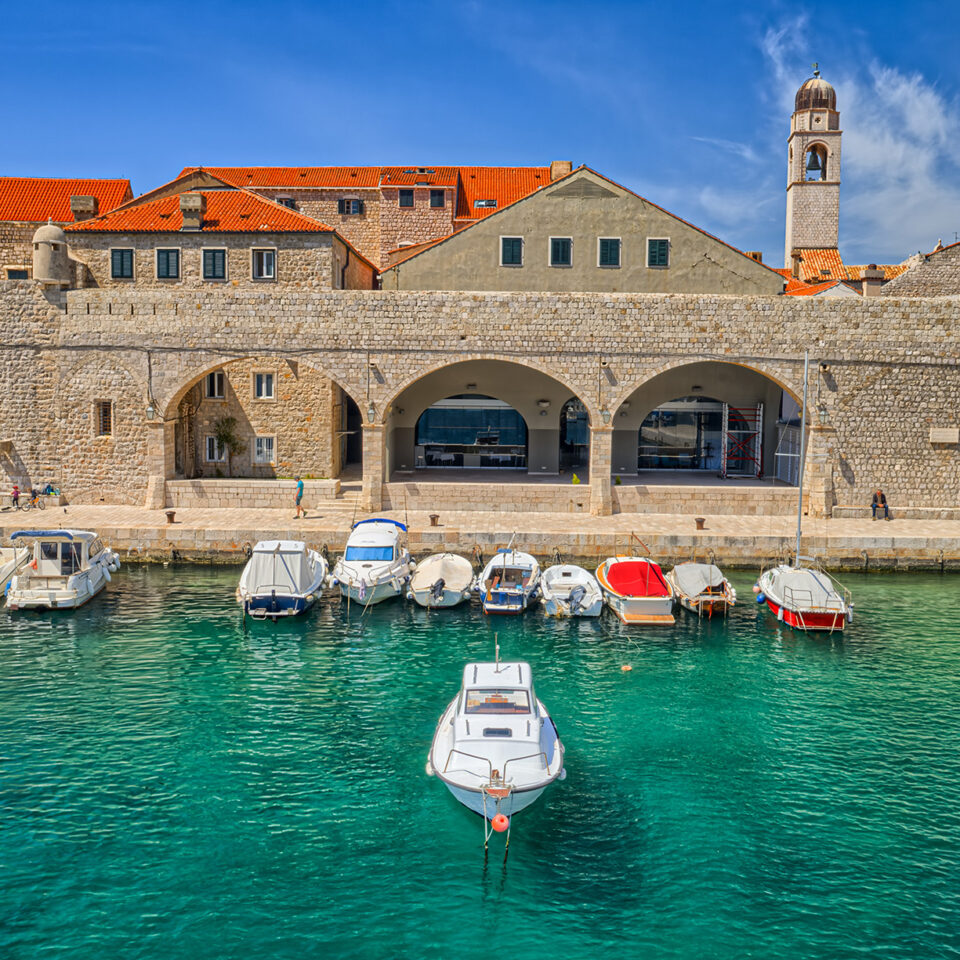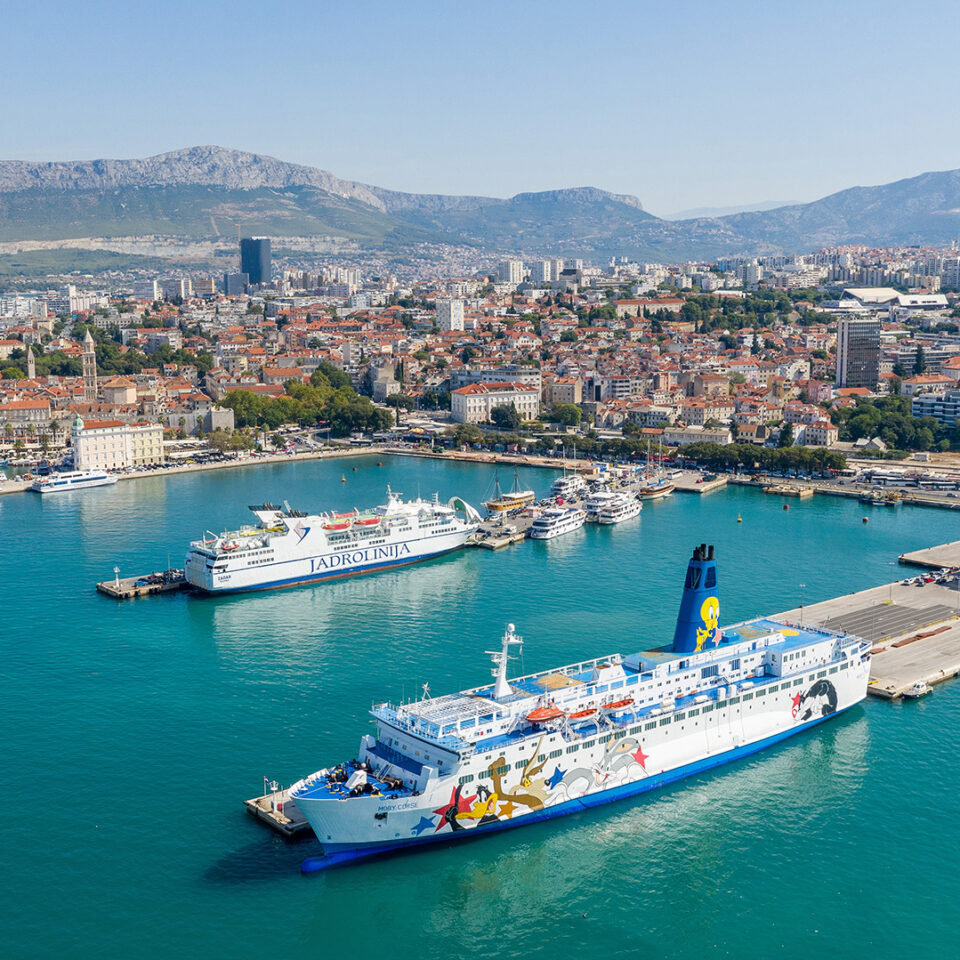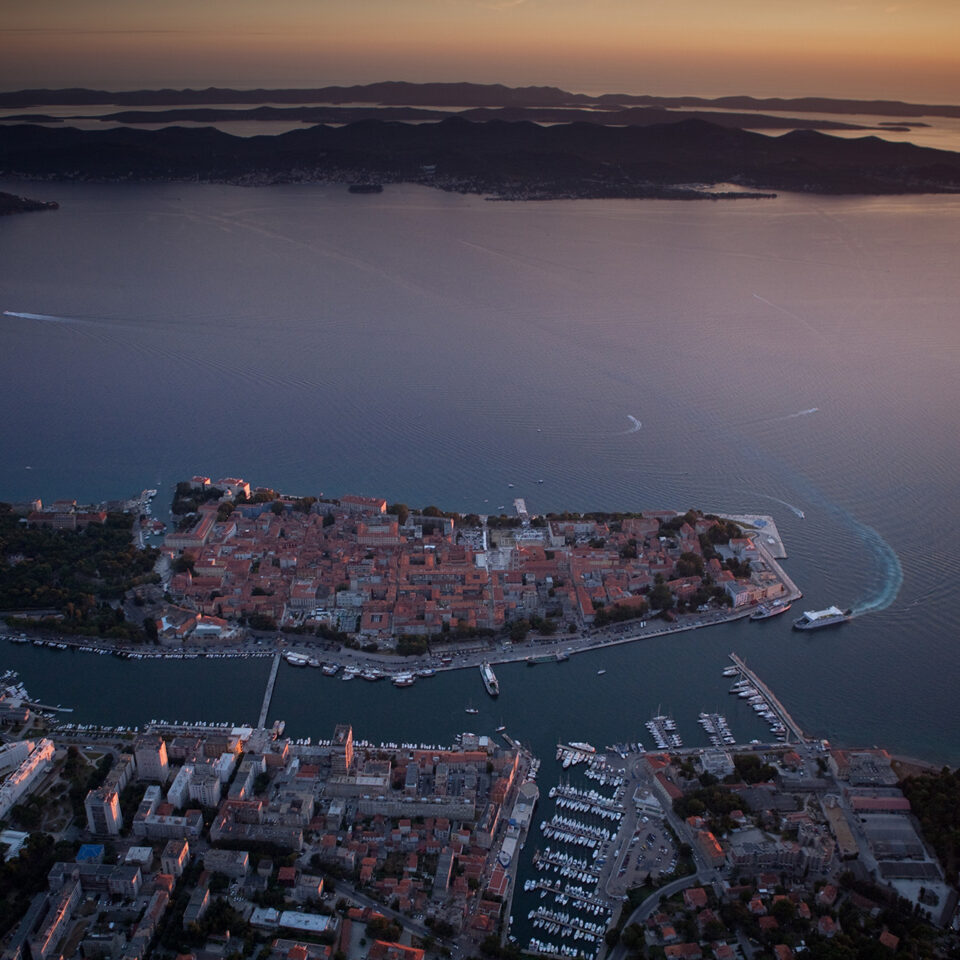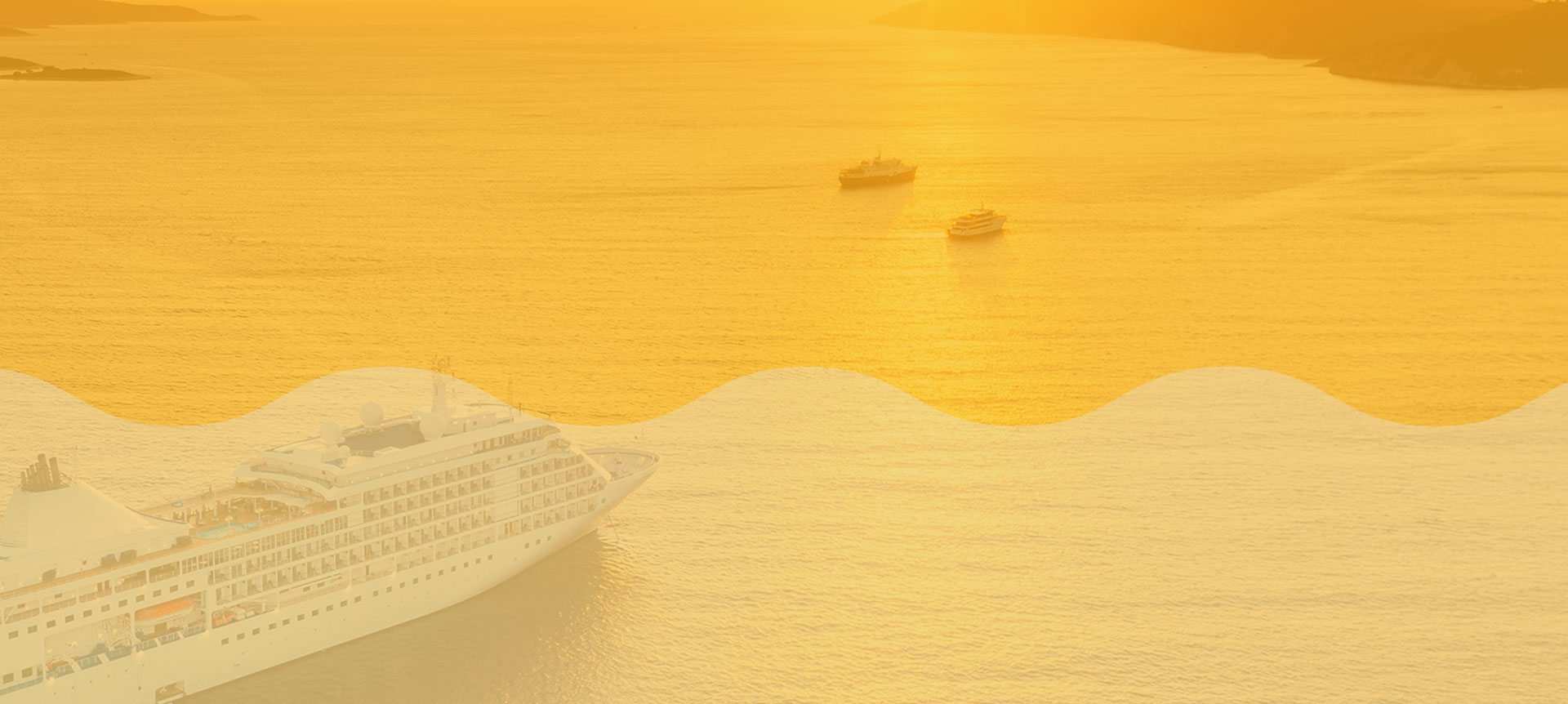


Falkuša – Traditional Fishing Boat
Ministry of Culture of the Republic of Croatia protected the experience of Gajeta falkuša – Komiža’s traditional historical fishing boat – as the national cultural intangible good.
In accordance with the decision of the Ministry of Culture, the experience of gajeta falkuša – folk heritage related to the falkuša, art of shipbuilding, navigation, sailing, fishing and the language – comprises all the characteristics of intangible cultural good.
A Falkuša is a traditional fishing boat used by fishermen from the town of Komiža on the island of Vis. Falkuša is a subtype of gajeta, a traditional Dalmatian fishing sailboat. Its design was adapted to specific needs of Komiža fishermen, who went to long fishing expeditions in the open seas, providing them sailing speed and practical characteristics for fish transport. This was a unique practice in the Adriatic and Mediterranean. In the 16th century in Komiža bay more than hundred falkuša’s were operating. Komiža was the center of fishing industry in the Adriatic. On each boat there were 5 crew members and they were sailing to the most distant locations using sails and rows. Sailing to distant island of Palagruža is the oldest known off-shore regatta in Mediterranean!
By telling a story about a small boat that, for many centuries, has been the centre of gravity of a small island community and saving the traditional knowledge and skills from oblivion, on the one hand the identity based on one’s own cultural milieu is preserved and on the other the national and total international cultural heritage enriched. Ropes, fishnets, nets, braces (imbroji and škota), lateens, sails… The tradition continues, and the falkuša is still cutting through the waves, devouring nautical miles.
FISHING TOOLS
There were two ways of fishing, with two types of fishnets: trata and budel. Five-member-company was fishing with budel. On gajeta, there were five pairs of these nets and one pair had 4 interconnected budels. With these fishnets, fishermen of Komiža caught the majority of sardines on their offshore posts. On fishing positions around the islands of Vis and Biševo fishnets called trata were used for hauling fish huddled up under the fishing light. Up to 20 people, on several boats, worked together with trata at the same time. These fishnets required significant financial resources. Nowadays fishermen mostly use longlines and fish traps.
THE ART OF NAVIGATION
Over the past centuries, the island of Vis had been the most vulnerable Dalmatian island and the one most exposed to pirate attacks, especially Komiža, facing the open sea.
Fishermen had no one to rely on but his own knowledge and experience. Svićor, the captain, always trusted his ears more than his eyes. By listening, he could tell how well the sails caught the wind/or how well the wind pushed on the sails. He observed the wind, current of the swell and even the seagulls to determine whether or not they were close to the coast.
The old fishermen always looked at the clouds, how they moved and changed. It was vital to follow low and high tides. They were able to recognize the slightest wind change and experienced fishermen could distinguish up to 16 different winds.
Maestral (mistral) is a NW wind and the best for sailing to Palagruža. Jugo (Scirocco) is a SE wind, the best for sailing back to Komiža from Palagruža. Favourable winds for sailing back to Komiža are also Oštro (Ostro), S and Levont (Levante) eastern wind. Garbin is a WSW wind which raises high waves so all the boats in the harbour have to be well moored.
Fishermen of Komiža didn’t use any navigation instruments, not even the compass.
Their instruments were their eyes and ears. There were no watches or clocks,
but they could tell the time by following and looking at the stars. By observing the stars,
they could even tell when the pilchards were moving up, closer to the surface, in different places.
A MASTERPIECE OF SUSTAINABLE DESIGN
The fishermen of Komiža developed a special type of gajeta by adapting it to the navigation and fishing conditions of the most remote routes. Thus, the falkuša became the first Croatian fishing boat courageous enough to leave the Adriatic, reach the vast Mediterranean Sea and sail to the faraway island of Malta.
The gajeta is a boat about 9 meters in length by 2.55 metres wide. It has a lateen sail and a flock with the total surface of 90 m² (similar to a two-bedroom apartment) along with removable side strakes called falks. This impressive boat can achieve speeds of up to 11 knots!
A triangular lateen sail is falkuša’s distinguishing feature. It is set on a long yard mounted at an angle on the mast running in a fore-and-aft direction which makes it very suitable for side winds. Falkuša’s oars are operated while standing up, and the crew, družina is made up of a captain, svićor and two to four crewmembers.
During the fool moon, one must go to the woods in the south of the island where strong winds blow and where the ground is shallow. Trees need to be found there with curves shaped by winds and tailored for your boat and kindly ask, I believe, pines and holly oaks and birds and crickets,
asked should they be to forgive you for borrowing their wood for planks and ribs,
stems and sterns, decks and beams, stakes, falks and thwarts of your boat.”
FISHERIES
Over the centuries, the European pilchard marked the fishing world of Komiža being the foundation of existence on the territory of the Vis Archipelago whilst, in the past millennium, the gajeta falkuša made it possible for fishermen to catch much more sardines than any other type of boat in the Adriatic. Thanks to the gajeta, until the 19th century the fishermen of Komiža were the only offshore fishermen in the Mediterranean. In addition to that, it is interesting to learn that inhabitants of Komiža laid the foundation for the Spanish fish industry. Falkuša enabled Croatian fishermen to maintain their presence on the island of Palagruža located only 27 nautical miles away from the Italian coast and having one of the richest fishing grounds in the Adriatic. A number of documents dating back to 1553 mention the catch of 120 tons of blue fish in a single day! Komiža used to be the most important exporter of salted fish in the Adriatic and the epicentre of fish industry until the end of the 20th century. Komiža is the place where the very first fish cannery in the Adriatic was established in 1870 and later on there were as many as seven factories for fish canning. Many fishermen’s families moved to California and consequently took over a large portion of the US fish industry. Thus, in 1917, the fishermen from Komiža started a small factory in San Pedro which, by the 1950s, evolved into the biggest fish canning company not only in the US but also in the world. There was hardly a person from Komiža who, after moving to the USA did not start his or her life there working in this factory. For that reason, it does not come as a surprise that today there are many more people from Komiža in San Pedro than in actual Komiža on the island of Vis.
MIKULA
As the protector of fishermen, travellers and the city of Komiža, Saint Nicholas the Traveller watched over fishermen and gajetas and consecrated their dangerous work and hardship for many generations. Every year, on the 6th of December when Saint Nicholas day was observed, the fishermen of Komiža set an old wooden boat on fire in his honour as a token of salvation for all other boats and those who sail on them. That tradition has been preserved to this day. However, wooden boats are hard to find nowadays… Ever since the first motor engine had been started on a boat, authentic types of vessels designed during centuries by many generations of shipbuilders, fishermen and seafarers started disappearing. Overnight, the motor engine and the logic behind the concept transformed ships, customs, habits and knowledge.
OUR ANCESTORS’ STORIES
For centuries Saint Nicholas the Traveler watched over fishermen, consecrating their dangerous work and hardship and his stick gave them hope, leading them through stormy seas and returning them safely back to their homes and families. By word of mouth, the knowledge was passed down from the old generations to those who were just beginning to acquire the first experience at sea. The entire knowledge essential for survival was preserved in the memory of those who devoted their whole life to the sea.
Laughter should be mentioned too. These fishermen laughed at others but also at themselves. In this fisherman’s world, the dominant form of oral literature is facenda – a humorous story about everyday life. It preserves the language richness created by many generations of oral narrators. Facenda brings together the community, treasures its collective memory, builds its value system and connects the living and those living on in the memory.
PIRATS AND THE OLDEST REGATTA
Over the past centuries, the island of Vis had been the most vulnerable Dalmatian island and the one most exposed to pirate attacks. The location of the town of Komiža, facing the open sea, was particularly sensitive.
During the 16th century, the authorities of the Venetian Republic identified the problem, which resulted in their decision to construct a fortification, currently known as Komuna and located at the very centre of the town of Komiža. Having in mind that the Venetians had never finalised the construction of the facility, the township of Komiža introduced a special fish tax to finance the finalization of construction works on that impressive fortress. However, the fortress could not protect fishermen fishing in the open sea so that they had to organise mass regattas in order to confront powerful pirates in the case of an attack. Hence, with the beginning of each fishing night up to five hundred oarsmen, on about one hundred gajetas, started the regatta from Komiža in the direction of the remote Palagruža.
There were also competing with each other to conquer and very inaccessible coastline along the island of Palagruža. The fastest ones would win the best locations on the island for getting their boats out, salting the fish, draying cotton fishnets and similar. With the rising of the Moon and after exhausting fishing and salting tasks, the fishermen would return to Komiža with baskets of salted fish filled to the brim.
The winners of the regatta were considered heroes in Komiža and their glory was passed onto many generations to come. They were the ones capable of forming the best crews made of the most resilient and agile fishermen who were able to row from Komiža to Palagruža if there was no wind, from sunrise to sunset, incessantly and inside of heavy of gajatas filled with salt and all the equipment necessary for a twenty-day-long fishing venture at the Palagruža Archipelago. In terms of rowing, Rota Palagužona was the longest sea marathon in the world and a unique adventure that required surpassing the limits of human physical abilities.
THE POPE AND THE FISHERMEN
On 9 March 1177, Komiža fishermen welcomed Pope Alexander III on the beaches of Palagruža. The Pope had embarked on a trip to Venice with his fleet but had to pull up along the coast of Palagruža due to bad weather. The next day, the Komiža falkušas lead the Pope’s galleys on their way to Komiža, where the Pope consecrated the Church of St. Nicholas. Also, as a sign of gratitude to the fishermen who helped him, the Pope granted indulgence to all fishermen who went fishing on holy days. According to the records of the Pope’s biographer Boson, the fishermen prepared a dinner for the Pope on the island of Palagruža. As an evocation of this 12th century event, the “Pope’s Dinner” is held on the beaches of Palagruža every year, organized by the crews of the boats participating in the regatta.
Falkuša Fishing Boat – Story & Locations – Virtual Tour

